Gravitational Waves And The Search For Hierarchical Black Hole Mergers
Header image: Illustration of two black holes surrounded by disks of gas and dust, spiraling toward each other as they merge. Image Credit: Carl Knox / OzGrav / Swinburne University of Technology
Written by Adler Planetarium Astronomer, Dr. Shanika Galaudage
Gravitational waves are ripples in spacetime created by accelerating objects such as black holes and neutron stars spiraling together and merging. These waves move at the speed of light, stretching and squeezing space as they pass, bringing us information about some of the universe’s most powerful events. Since scientists first detected gravitational waves in 2015, we have gained a whole new way to explore the universe. These ripples in spacetime let us ‘hear’ the universe in a way Einstein could only dream of.
In fact, we just celebrated the 10th anniversary of the first gravitational wave detection, which earned a Nobel Prize for scientists Rainer Weiss, Kip Thorne, and Barry Barish. Their contributions to LIGO (Laser Interferometer Gravitational-Wave Observatory) changed the way we understand the universe. Sadly, we also lost Rainer Weiss in the lead-up to this historic milestone, just shy of the 10th anniversary. Weiss was a visionary, and his passing marked a somber moment for the community, but his legacy continues to shape the future of gravitational wave astronomy.
The Role Of LIGO And The NSF In Gravitational Wave Research
Discovering Gravitational Waves
The discovery of gravitational waves would not have been possible without decades of research, collaboration, and funding. The National Science Foundation (NSF) played an instrumental role in supporting the LIGO project—one of the most ambitious scientific endeavors ever undertaken. In an era where scientific funding can be uncertain, the NSF’s continued investment in this area has paid off, yielding groundbreaking results that have reshaped our understanding of the cosmos.
When gravitational-wave detectors were first being developed, many were skeptical about whether such faint, almost imperceptible signals could ever be picked up by human-made instruments. Even with really massive objects like black holes, the gravitational waves we detect would be incredibly tiny, roughly 1/10,000th the size of a proton’s diameter! But against all odds, the LIGO detectors in Hanford, Washington and Livingston, Louisiana managed to detect the first-ever gravitational wave signal, originating from the merger of two black holes!
Gravitational Wave Research Today
Since then, LIGO along with detectors around the world (Italy’s Virgo and Japan’s KAGRA) have detected hundreds of gravitational wave events! These detections have provided critical insights into the mass and spin of black holes, phenomena that were previously beyond the reach of traditional telescopes. These gravitational waves signals were produced by binary systems, where two compact objects, like black holes, orbit one another in a cosmic dance before spiraling together and merging.
Want to take a deeper dive into gravitational waves and how they’ve changed astronomy? Learn more from our astronomer and gravitational wave expert, Dr. Michael Zevin.
Meet The New Gravitational Waves: GW241011 and GW241110
The LIGO-Virgo-KAGRA collaboration recently announced the discovery of two new gravitational-wave events: GW241011 and GW241110 (GW stands for “gravitational wave” and the numbers are its discovery date). These events are strikingly similar, and not just in their names! Both of these signals were created by the merger of an unequal mass pair of black holes. And in both systems, the heavier black hole spins very rapidly. By looking at the properties of the systems, we can begin to understand how and where the systems form and evolve.
GW241011
Let’s start with GW241011. Detected on October 11, 2024, this was a merger between two black holes with masses of 20 and 6 times the mass of our Sun. The spin direction of the heavier black hole was in the same direction as the pair’s orbit and spinning incredibly fast, around 69–87 percent of the maximum possible spin rate.
GW241110
GW241110, detected about a month later on November 10, 2024, showed us a slightly different scenario. The masses were in a similar range, with the black holes being 17 and 8 times the mass of the Sun. However, the spin of the more massive black hole was rotating in the opposite direction (or anti-aligned) to the orbit of the binary. The larger black hole was spinning at a similarly impressive rate of 21–94 percent of the maximum possible spin rate!
What We Learned From GW241011 and GW241110
The unequal masses, combined with high spins and anti-alignment, suggest that the larger black holes may be what we called a second-generation black hole—meaning it formed from a previous black hole merger! This process where black holes merge, and merge again is called hierarchical formation.
Check out the infographic below for a highlight of the results created by yours truly!
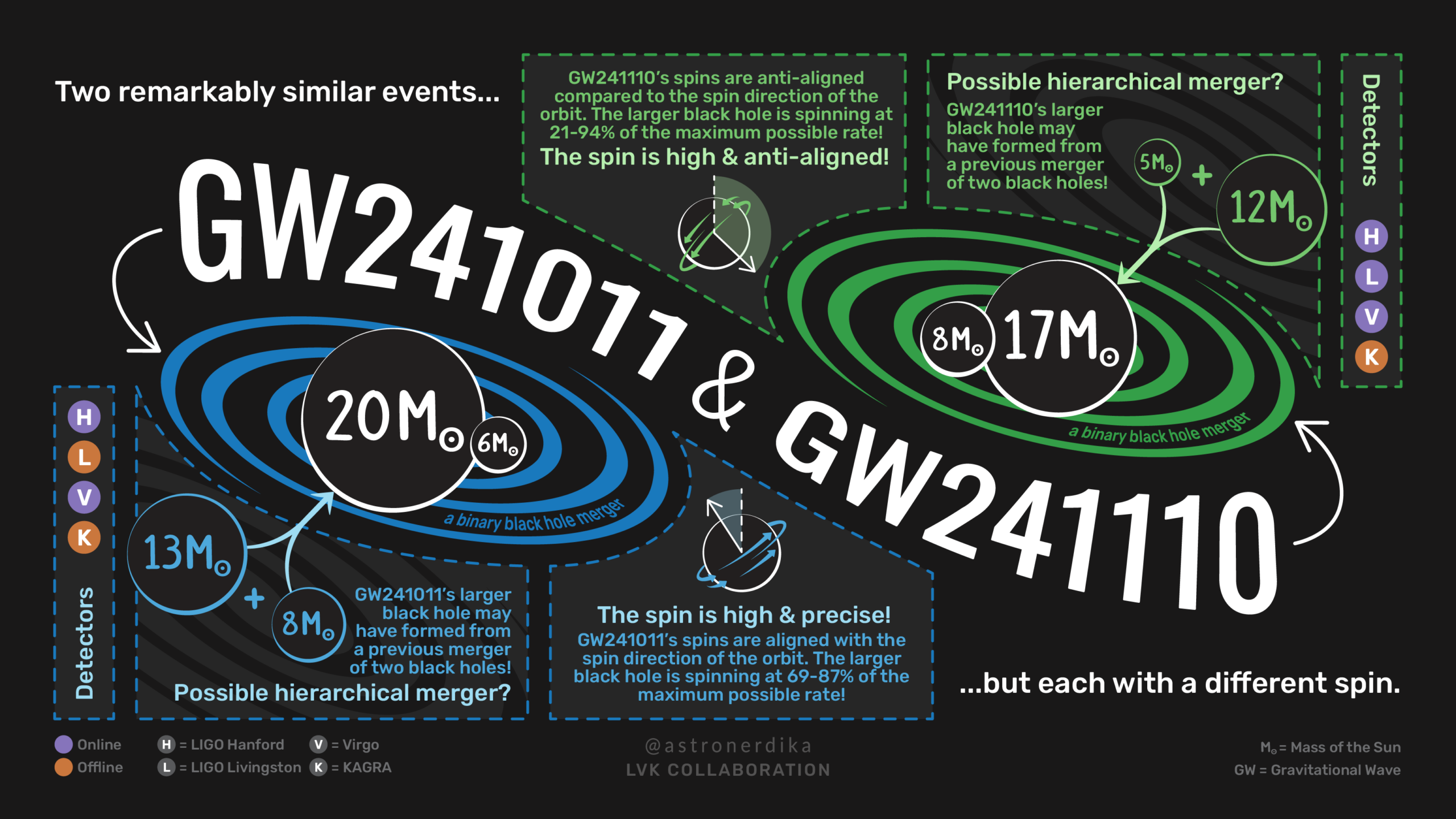
Hierarchical Formation: Black Holes That Merge, Then Merge Again
One intriguing detail about these events is that both GW241011 and GW241110 may have involved hierarchical mergers. But what does this mean? Essentially the larger black holes in both events could have come from the merger of smaller black holes in a previous generation rather than collapsing from stars.
Evidence Of Hierarchical Formation
But why do we suspect hierarchical formation? In both events, the more massive black holes have very fast spins, the systems have unequal masses, and in one of the cases, we have a black hole that is anti-aligned. These are features that are hard to explain if the black hole were born together from a pair of massive stars in isolation.
When black holes merge, the resulting black hole has both the spin of the previous black holes as well as the spin from the orbital notion as well. Therefore black holes that have formed from black hole mergers are larger but also have higher spins. If you have black holes that are randomly meeting each other in a dense star cluster, their spin tilts don’t necessarily have to be aligned with respect to the binary orbit. In contrast, black holes that form in isolated binary star systems—also known as the galactic field—tend to have similar masses and aligned spins tilts.
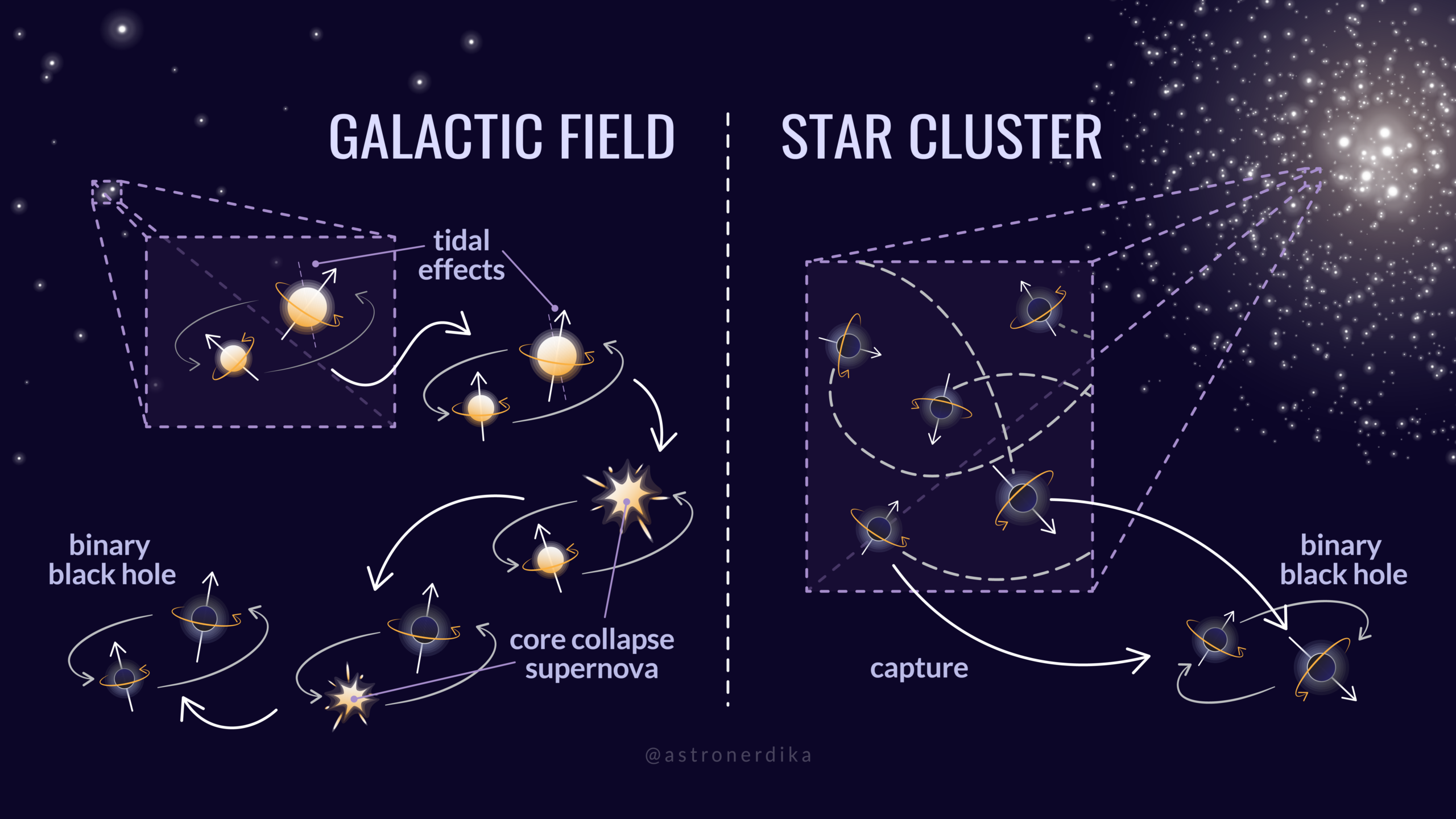
This is why scientists think that hierarchical mergers happen in dense stellar environments like globular clusters or nuclear star clusters, because this is where black holes can frequently interact, pair up, merge, and merge again sometimes. In the galactic field, stars and black holes are so spaced far apart that repeated encounters are pretty much impossible.
While the hierarchical formation scenario seems like the best explanation for these events, we cannot rule out other formation scenarios, and this is a big area of research in the field. Researchers at the Adler, such as myself and Dr. Michael Zevin, are interested in investigating and understanding just how these black hole systems form and evolve.
A New Era For Gravitational Wave Research
The field of gravitational wave astronomy has come a long way in just 10 years! The ability to detect these signals has opened up an entirely new window into the universe. As our detectors improve, and we refine our technology, the field will become even more exciting and improve our understanding of these colliding giants across the cosmos.
There are also plans for more gravitational wave detectors such as Cosmic Explorer and LISA (Laser Interferometer Space Antenna). Cosmic Explorer is set to be the next generation of ground-based detectors, with arms 40 km long, much longer than the current ground-based observatories, which have arms just a few kilometers long. LISA will be a space-based detector with an arm-length of 2.5 million kilometers! It will also have a different configuration, a triangle shaped configuration instead of an L-shaped one.
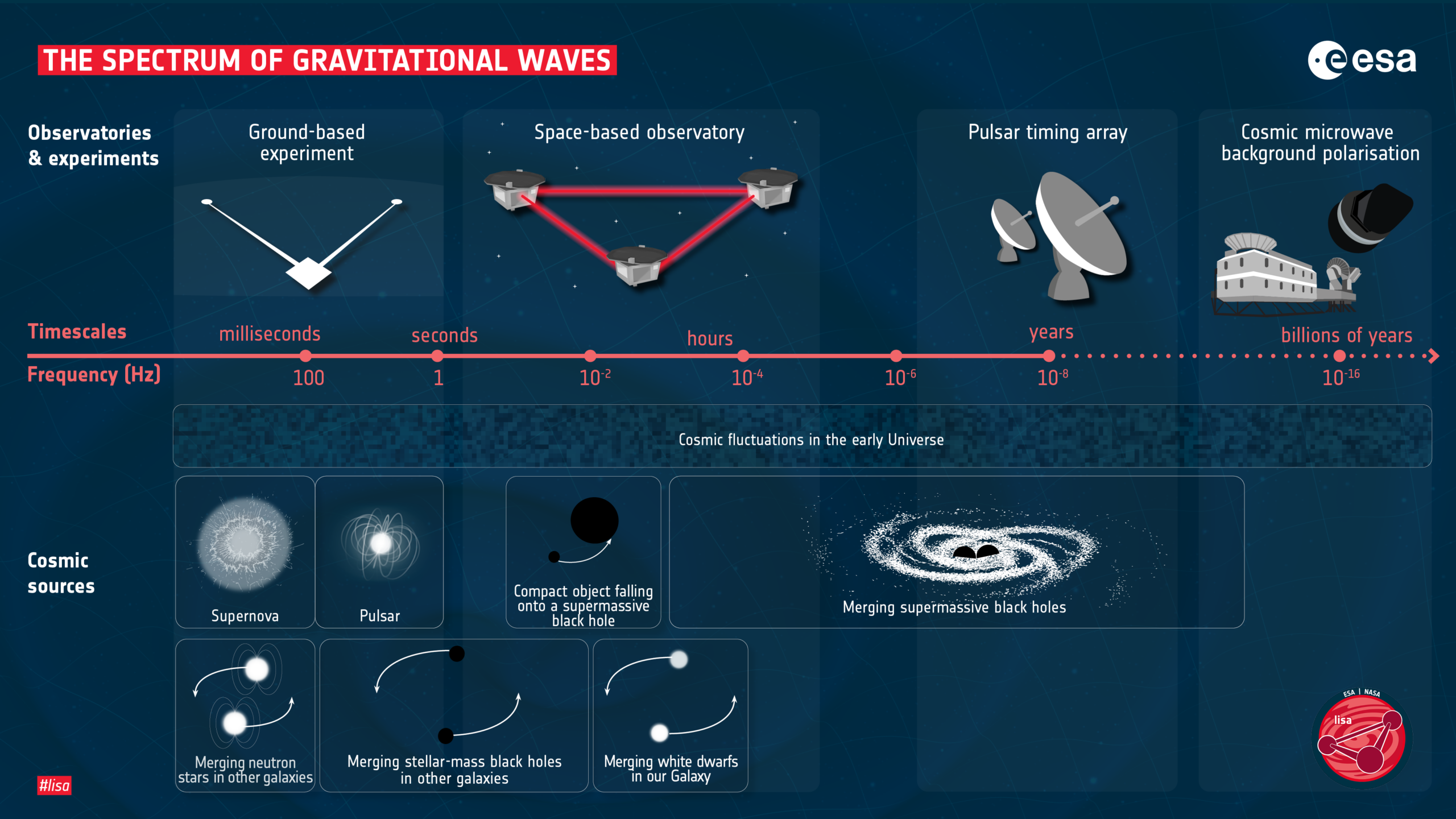
With these future detectors, we will push the boundaries even further to span a wider range of signal frequencies! We’ll be able to see larger black holes collide, and even smaller black holes plunging into supermassive black holes. We will also be able to listen to signals from deeper in the universe—maybe even from the earliest moments after the Big Bang!
As we celebrate these achievements, it’s also important to remember that continued funding will be crucial for sustaining the progress in gravitational wave research. With ongoing shifts in priorities funding astronomy, the future of gravitational wave research will face some challenges, but as long as scientists and the public alike are keen for these discoveries to continue, the future will remain bright AND loud in astronomy.
Learn More From Our Astronomers
Get more space with Adler Planetarium astronomers on our YouTube Channel! Ever wondered what dark matter actually is, or if we’re living in a simulation? Hear directly from our experts on some of the most commonly asked—and not so commonly asked—astronomy questions.
Adler Skywatch: January 2026
Header image: the full Moon in a dark, cloudy sky.
Both the Sun and the Moon get a little closer to Earth than usual this month, January 2026. Here is your guide to the January 2026 sky!
Earth’s Perihelion
Earth’s orbit around the Sun is not a circle—it’s more of an ellipse, a type of oval shape. A perfectly circular orbit would have the Sun at its center, with Earth an equal distance away year-round. However, with an oval-shaped orbit, Earth can be nearer or farther away from the Sun on a given date.
This year, Earth reached perihelion—AKA its closest point to the Sun for the year—on January 3 at about 11:00 am Central Time. During perihelion, the Earth and the Sun were 91.4 million miles apart. On average, Earth is about 93 million miles from the Sun. Conversely, during aphelion—Earth’s farthest point from the Sun—there is about 94.5 million miles between them. Aphelion occurs in 2026 on July 6. From perihelion to aphelion, there is a roughly three million mile difference in the Earth-Sun distance throughout its orbit.
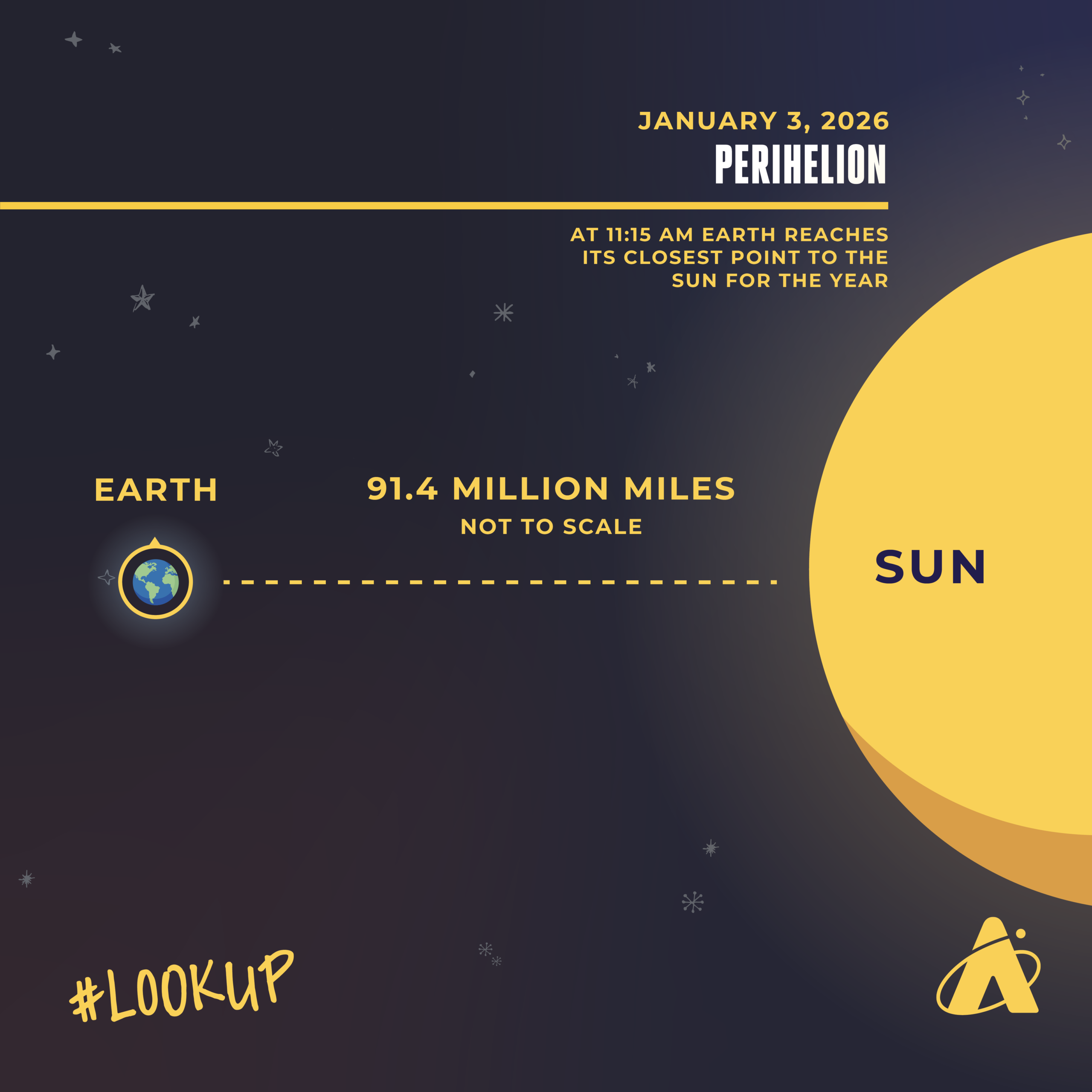
January’s Supermoon
The final two full Moons of 2025 were considered supermoons due to their closer-than-usual positioning near Earth. The first full Moon of 2026—which occurred in the early-morning darkness of January 3—is also considered a supermoon—though not quite as “super” as the 2025 supermoons.
On average, the Moon is about 238,900 miles away. January 3’s full Moon was about 225,000 miles from Earth. The last two supermoons (on December 4 and November 5, 2025) were about 3,000 miles closer than this month’s full supermoon.
January Planet Spotting
How To See Saturn
The planet Saturn is visible about an hour after sunset and roughly halfway up in the southern skies in January. Early in the month, it’s in the south-southwest skies, but with the Sun setting later each evening, it won’t be visible until it gets further west in the sky during evening twilight. By month’s end, look for Saturn in the southwest sky.
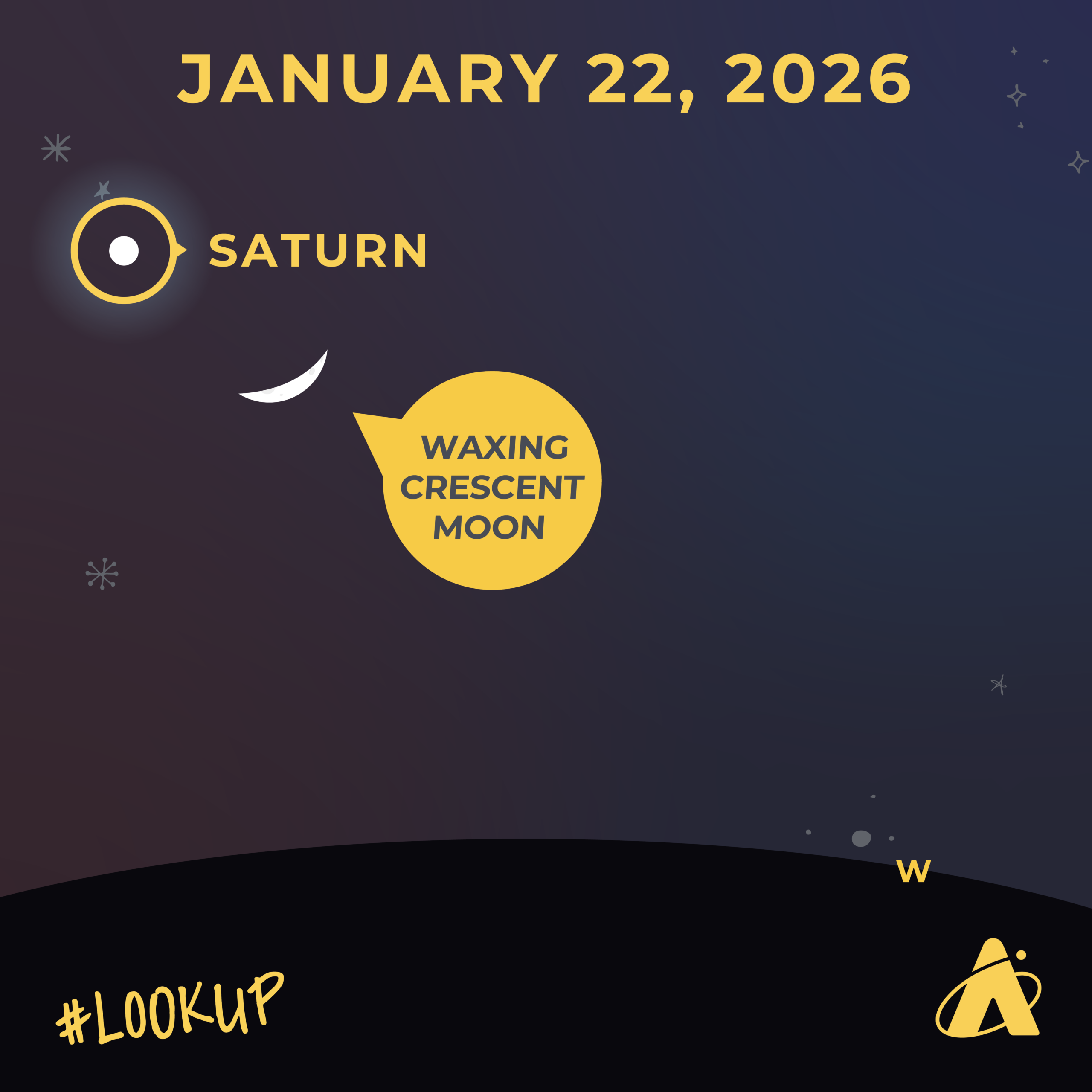
See Jupiter At Its Brightest
The bright planet Jupiter rises in the east-northeast near the end of evening twilight at the start of the month. As the evenings pass, Jupiter rises earlier, popping into view in evening twilight during mid-month. Late in the month, Jupiter rises in the east-northeast around 3:00 pm, when the Sun is still above the horizon in the west-southwest.
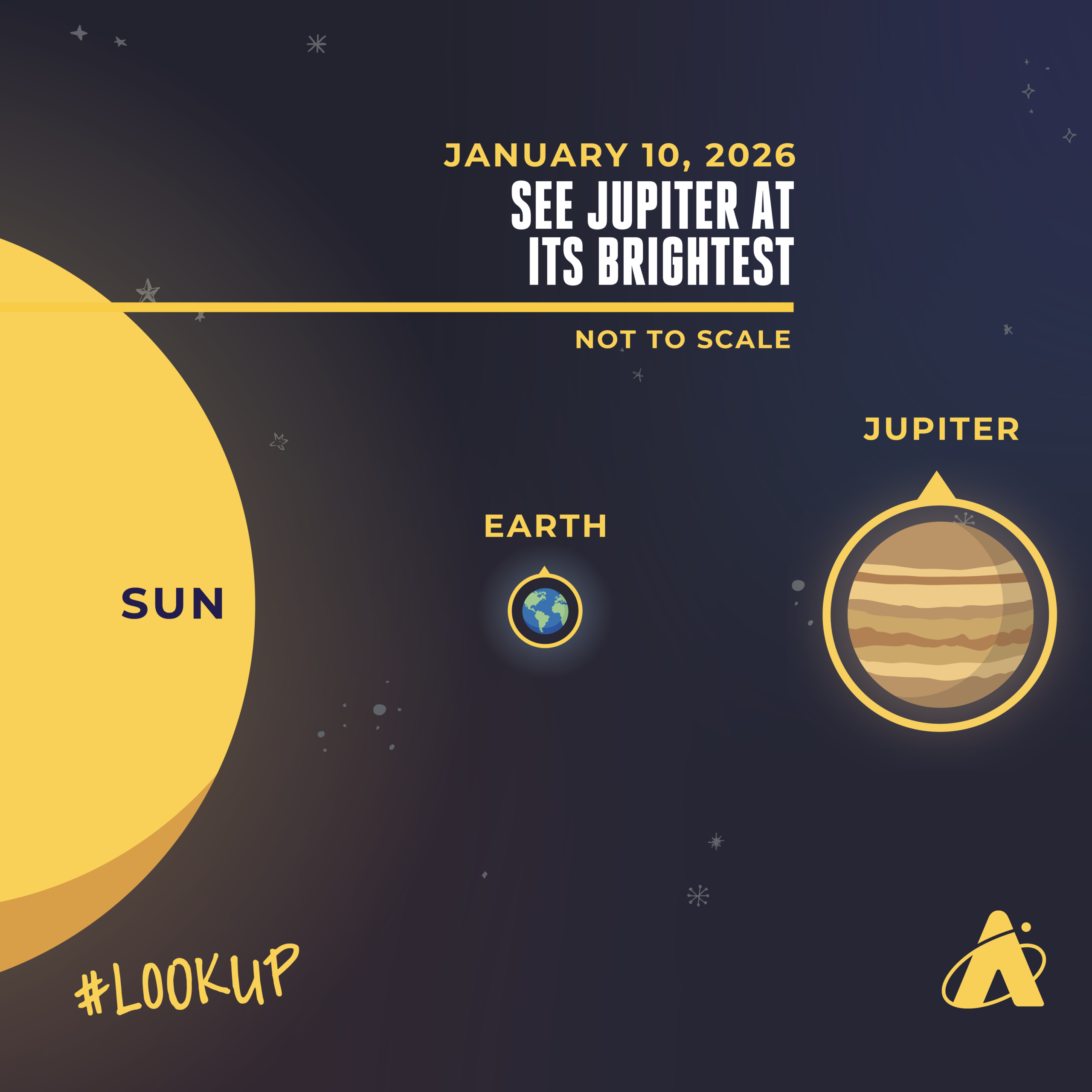
Its brightness is unmistakable, brighter than -2.5 magnitude. On January 10 it reaches opposition—its brightest point for the year. It’s about 70 degrees above the horizon around 12:30 am early in the month, around 11:30 pm mid-month, and around 10:30 pm late in the month. Jupiter will still be visible during morning twilight, low in the west-northwest sky. On the evening of January 30, you can use the Moon to help find it, as the waxing gibbous Moon will appear near Jupiter.
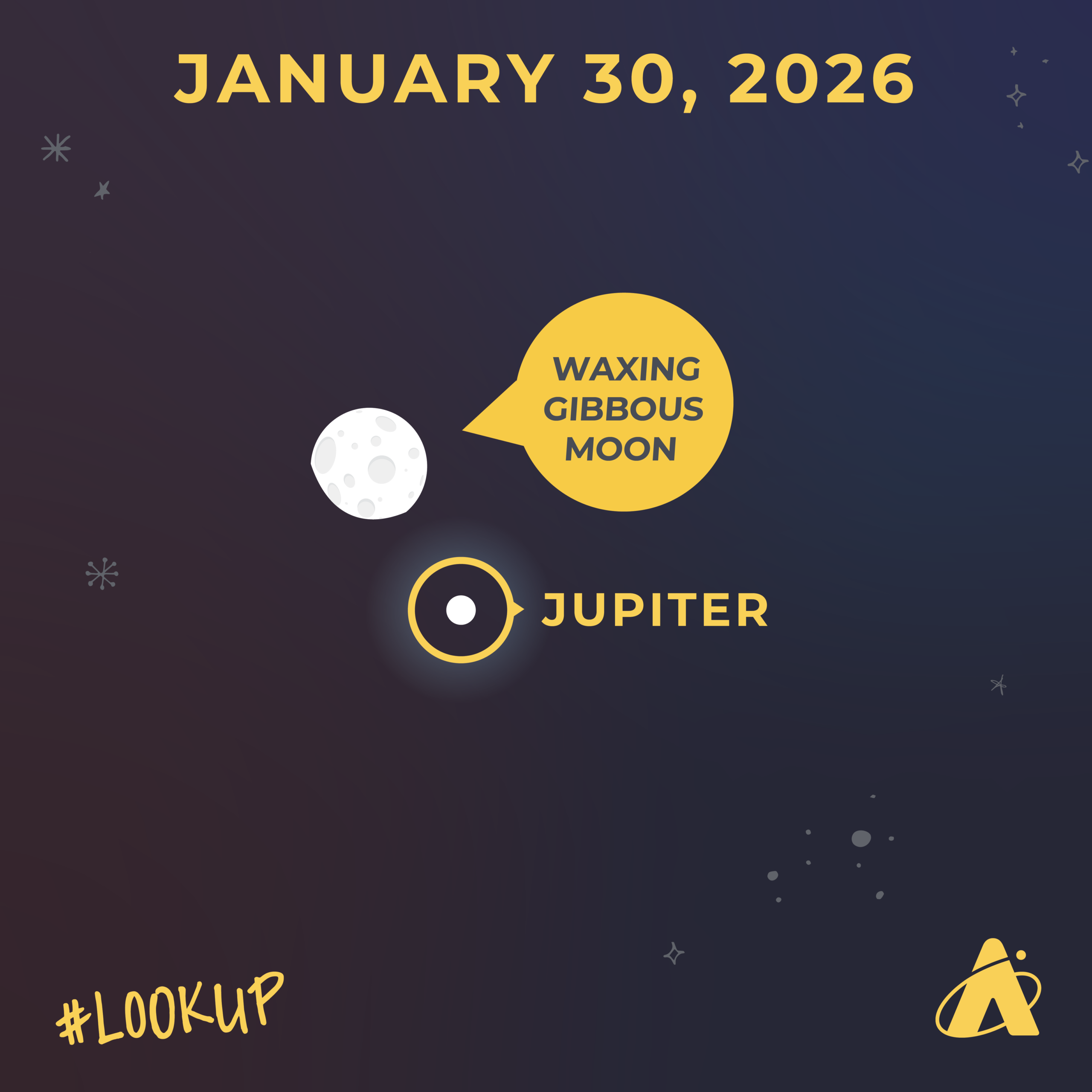
Where Are Mercury, Venus, and Mars?
The planets Mercury, Venus, and Mars spend the month clustered close to the Sun in the sky, and thus are not visible.
The Moon and Pleiades Conjunction
During evening twilight on January 27, keep an eye on the waxing gibbous Moon. The Sun sets around 5:00 pm this day, and if the sky is clear, you’ll also be able to see the Moon about 60 degrees high in the east-southeastern sky. About 60–90 minutes later, as the sky gets darker and the Moon gets higher, look again. Barely a degree away from the lit side of the Moon, you may be able to spot the Pleiades, a twinkly star cluster in the constellation Taurus!
The Moon’s light may prohibit seeing the nearby Pleiades until later in the evening, but this lovely star cluster remains within a few degrees of the Moon until it sets in the west-northwest around 2:30 am on January 28.
January 2026 Moon Phases
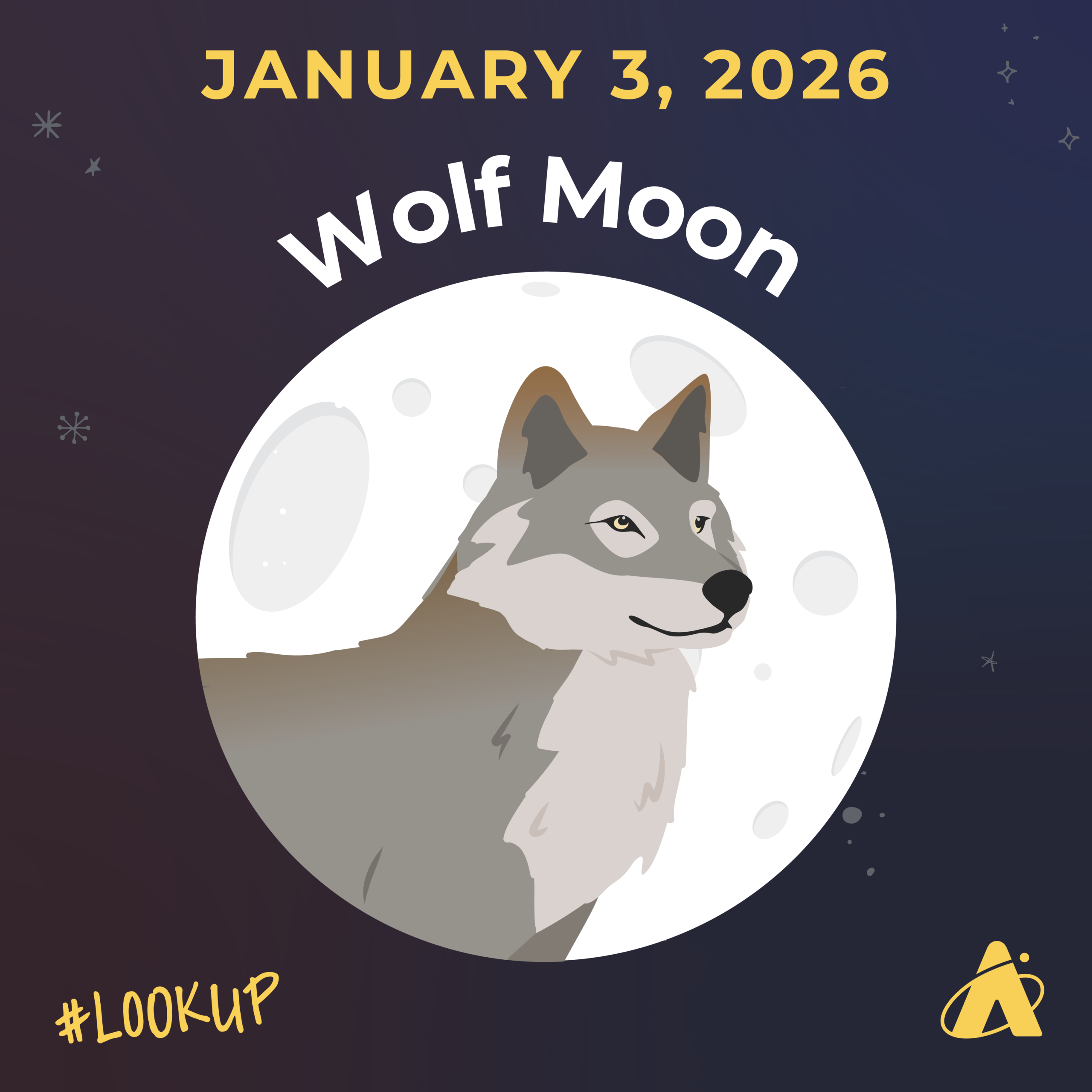
Full Moon: January 3
Last Quarter Moon: January 10
New Moon: January 18
First Quarter Moon: January 25
Please note: these descriptions are for the Chicago area, using Central time.
Subscribe To Skywatch Wednesday In The New Year
Tour the sky with the Adler Planetarium’s Theaters Manager, Nick, in Skywatch Wednesday. Nick uses cutting-edge visualizations, NASA images, and astrophotography to show you what you can see in the night sky throughout the year.
Check out Nick’s latest episode to guide you through the winter night sky. Learn how to find famous winter constellations like Orion, Taurus, Auriga, Canis Major and minor, and the planets Jupiter, Venus, Mercury, and even Saturn without its rings. Plus, see the lunar occultation of Regulus in February!
Learn From Our Astronomy Educators
Watch recaps of Sky Observers Hangout livestreams this January! Learn how to observe upcoming cosmic happenings, enhance your astrophotography skills, and see celestial objects through a telescope virtually with our astronomy educators.
In their latest episode, Michelle and Hunter guide you through a tour of the zodiac constellations. Explore the historical connections between astronomy and astrology, learn what signs of the zodiac you can see in the sky this winter, and observe some of the wonders found hiding within these famous constellations.
What Are Gravitational Waves: A New Window Into The Universe
Header image: Illustration of gravitational waves after a merger of two black holes. Gravitational waves ripple outward as the black holes spiral toward each other. Image credit: LIGO/T. Pyle
Written by The Adler Planetarium’s Astronomer, Dr. Michael Zevin.
Humanity’s understanding of the universe has evolved in parallel with new methods of observing the cosmos. Our ancient ancestors tracked and cataloged the motion of heavenly bodies, and by the early 17th century, the invention of the telescope allowed us to observe dimmer, more distant objects. In the 19th century, we began relying on astronomical photography—which allows us to expose images of the universe for longer periods of time—and astronomical spectroscopy—which breaks apart light into its constituent colors.
By the 20th century, we could observe the universe in energies and colors of light that the human eye cannot see and we finally bypassed Earth’s atmosphere by sending telescopes into space. All of these advancements have improved our understanding of the cosmos, unveiling new mysteries in the process.
What you may not realize is that there is a commonality between all of these astronomical advances. They all rely on collecting a single form of information—electromagnetic radiation, which you may know better as “light.” For almost the entire history of astronomy, light has been the sole cosmic messenger we’ve used to glean information from the vast universe beyond our solar system.
However, it is still only one form of information, one sense that we can collect information with. What could we learn if we were able to collect information using other senses? Rather than just seeing the universe, what else would we discover if we could hear or feel it?
What Are Gravitational Waves?
There are other messengers from the universe beyond just light. One of these messengers is called gravitational radiation or gravitational waves. This phenomenon was predicted by Albert Einstein over a century ago as a byproduct of his theory of general relativity.
General Relativity
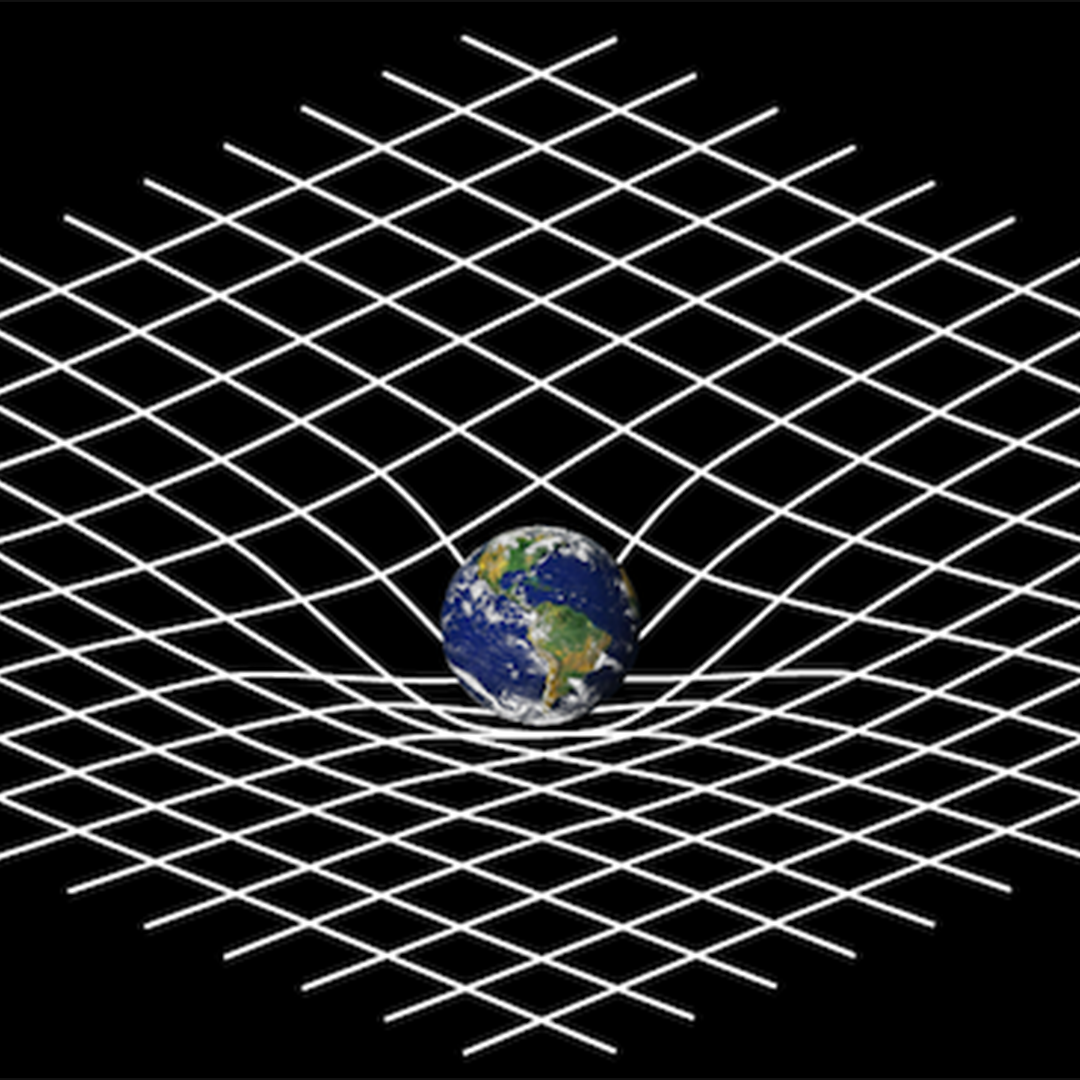
The theory of general relativity is our modern understanding of how gravity, space, and time operate in the universe. In a nutshell, it tells us that matter and energy curve the fabric of space. This curved space tells things like planets, stars, and galaxies how to move. If objects are accelerating through the malleable fabric of space, they create ripples in the fabric of space itself. These ripples are known as gravitational waves.
Gravitational waves travel at the speed of light and are completely invisible to a telescope, but provide a form of information from the universe that is completely independent from light! The direct detection of gravitational waves is analogous to hearing the sounds of the universe for the first time and can unveil unprecedented information about astrophysical objects that are notoriously difficult to study with light, such as black holes.
Observing Gravitational Waves
If gravitational waves are invisible, how can we detect them? As gravitational waves pass through space, they cause space itself—and everything within it—to expand and contract. For example, when a gravitational wave passes through our planet, it causes the equator to stretch, and the distance between the poles to squeeze, ever so slightly—and vice versa.
However, spacetime is exceptionally “stiff” and even the strongest gravitational waves have an unbelievably miniscule effect. For example, a passing gravitational wave from the collision of two black holes might stretch and squeeze the Earth by about the width of a proton, which is about a thousand trillionth of a meter. In fact, these signals are so elusive that even Einstein himself thought that we would never be able to detect them and use them to study the cosmos.
The Best Rulers Ever Built
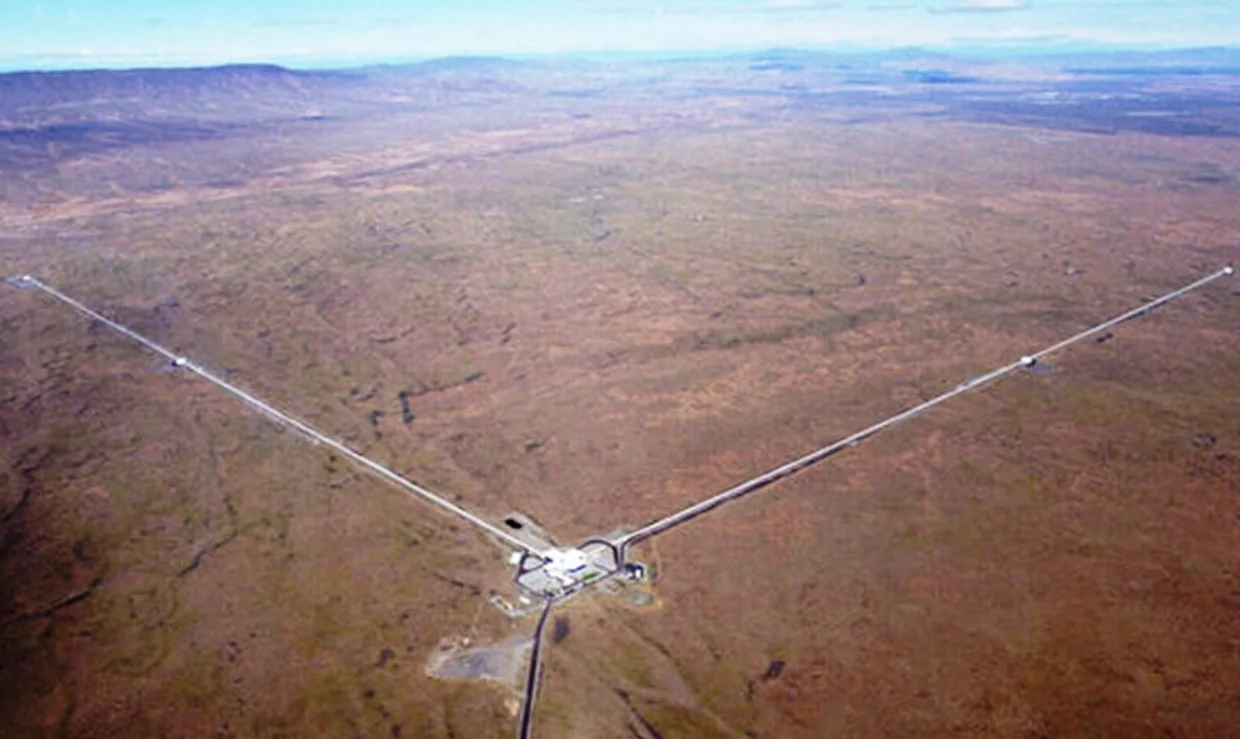
To observe gravitational waves, we use high-powered lasers that act as an incredibly precise ruler. The LIGO–Virgo–KAGRA gravitational-wave network does this with four separate detectors around the world: the twin LIGO detectors in Washington and Louisiana, the Virgo detector in Italy, and the KAGRA detector in Japan.
These detectors are giant L-shaped devices with two vacuum chamber arms that are each 2.5 miles long. The laser is sent down the two arms, bounces off mirrors at the ends of the arms, and comes back to interact with the light that went down the other arm. Because of the wave-like nature of the light in the lasers, we can detect interference when the two light beams recombine if the arms have a slight difference in length from a passing gravitational wave.
Gravitational Wave Research
The First Gravitational Wave Detected
On September 14, 2015, almost exactly a century after Einstein predicted the existence of gravitational waves, a screaming loud signal was observed in the LIGO detectors. Based on how the arms of the LIGO detectors wiggled, we could tell a lot about the system that created the gravitational-wave signal: two black holes about a billion lightyears away, each about 30 times the mass of the Sun, spiraling towards one another and merging.
This signal was one of the most monumental discoveries in modern physics, and was awarded the Nobel Prize in Physics in 2017. For the first time, we were able to hear the sounds of spacetime and use gravitational waves as a new sense to collect information from the universe!
Gravitational Wave Research Today
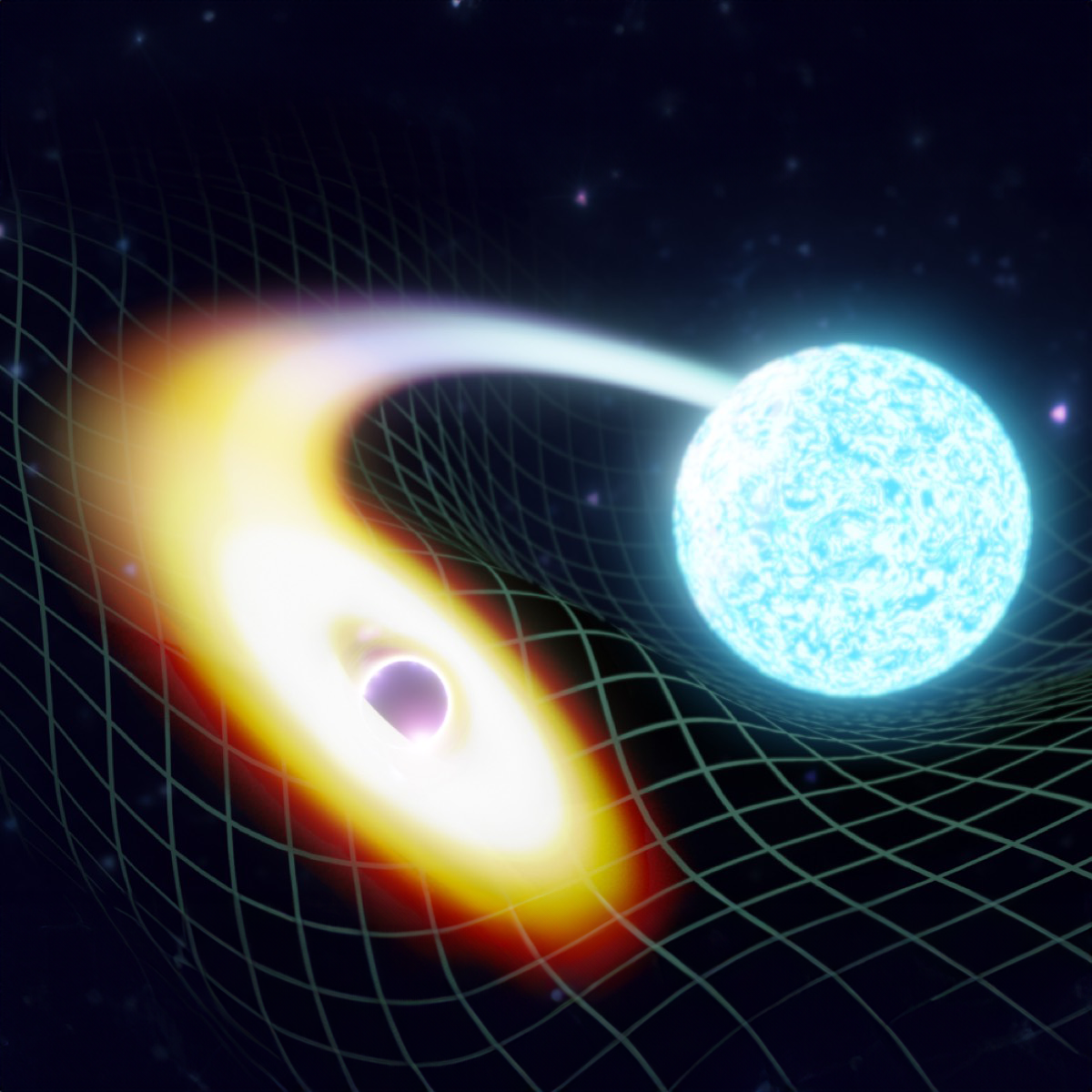
Since this discovery, the field of gravitational-wave astronomy has exploded. The last full observing run of gravitational-wave detectors completed in 2020, and at that time nearly 100 confident gravitational-wave events were observed. These didn’t just come from merging black holes; the dense remnant cores of massive stars called neutron stars were also observed in gravitational waves.
In fact, one infamous system of two merging neutron stars was observed in both electromagnetic and gravitational radiation—a “multi-messenger” event! When two neutron stars merge, they not only emit gravitational waves, but also a burst of high-energy radiation called a gamma-ray burst and an explosion powered by radioactive decay called a kilonova.
Kilonovas create a beautiful light show and are responsible for synthesizing most of the heavy elements on the periodic table (so you can thank them for generating the gold, silver, and platinum we have here on Earth).
Despite the groundbreaking gravitational-wave discoveries during the first half-decade of observations, the field of gravitational-wave astronomy is still in its nascent stages.
The network of gravitational-wave detectors turned back on for another observing run in May 2023, with hundreds more systems expected to be detected over the next few years. Expect quite a fanfare, with black holes, and neutron stars galore!
Learn More From Our Astronomers
Get more space with Adler Planetarium astronomers on our YouTube Channel! Ever wondered what dark matter actually is, or if we’re living in a simulation? Hear directly from our experts on some of the most commonly asked—and not so commonly asked—astronomy questions.
Pink Floyd’s ‘The Dark Side Of The Moon’ Fulldome Show Now Playing At The Adler Planetarium
Header Image: A theater with seats that has a 360-degree screen, and projected onto the screen is an image of a dark night sky with white star trails, a rainbow heartbeat pulse, and three pyramids.
The Adler Planetarium is excited to announce, beginning January 1, 2026, Pink Floyd’s The Dark Side Of The Moon fulldome show returns for another year-long run. The Dark Side Of The Moon takes guests on a visual journey through space against the backdrop of one of the best-selling albums of all time, created and distributed in partnership with the band and the International Planetarium Society (IPS).
The Dark Side of The Moon Returns to Adler Planetarium
Transcend reality—with this immersive space and musical experience in this 45-minute planetarium show.
“The show itself will be divided between the 10 tracks on the album, and in chronological order; each having a different theme; some futuristically looking forward and some a retro acknowledgement to Pink Floyd’s visual history, all relating to a time and space experience, embracing up to the minute technology that only a planetarium can offer,” says Pink Floyd album cover designer Aubrey Powell.
“In the modern parlance it’s truly immersive; an all encompassing surround sound treat that will transcend reality and take you way beyond the realms of 2D experience.”
Viewer discretion is advised due to the explicit nature of some lyrics. Please be advised: this show may also cause motion sickness.
More Opportunities To See The Show
The Dark Side Of The Moon will play every day, as the last show of the day, during museum open hours. Tickets must be purchased in addition to a Museum Entry ticket or as an add-on to any museum admission package.
Free Museum Days For Illinois Residents
Illinois residents receive Museum Entry for free during Illinois Resident Discount Days. The Adler has added select Mondays in addition to its weekly Wednesday evening free admission calendar.
Winter Illinois Resident Free Days Include:
- January 7, 14, 21, 28 at 4:00 pm–10:00 pm
- January 12 and 26 at 9:00 am–4:00 pm
- February: 4, 11,18, 25 at 4:00 pm–10:00 pm
- February: 2, 9, 23 at 9:00 am–4:00 pm
- March: 4, 11, 18, 25 at 4:00 pm–10:00 pm
- March: 2 and 9 at 9:00 am–4:00 pm
Adler Zooniverse Awarded Schmidt Sciences Humanities And AI Virtual Institute Grant
Header Image: The Zooniverse team gathered at The University of Minnisota for the 2025 Zooniverse Team Meeting.
Written by Dr. Samantha Blickhan
This blog was originally posted on daily.zooniverse.org
We are excited to announce that Adler Zooniverse has been selected for a 2025 Humanities and AI Virtual Institute (HAVI) award from Schmidt Sciences. HAVI supports groundbreaking work at the intersection of AI and the humanities, and you can read the announcement here, and learn more about the 23 projects awarded here.
The Zooniverse team, led by project co-PI Dr. Samantha Blickhan (Zooniverse Co-Director and Digital Humanities Lead), will work with researchers from University of California Santa Barbara (Dr. Jim Casey, PI), Penn State University (Dr. Chris Dancy, co-PI), University of Washington (Dr. Ben Lee, co-PI), and Lincoln University of PA (Dr. Tiffanie Smith, co-PI). Our project, “Communities in the Loop: AI for Cultures & Contexts in Multimodal Archives,” will focus on using crowdsourcing together with novel AI systems to unlock access to the early Black press, helping to create a searchable, digitized corpus of 19th-century newspapers published by historical figures such as Frederick Douglass, as well as developing new critical approaches for computing and interpreting the past.
As part of this work, we will create new, bespoke features for our Zooniverse mobile app, creating opportunities and tools for the public to engage with historical texts in a mobile environment. Until now, tools and workflows for historical transcription on Zooniverse have mainly been limited to participants working from a desktop or laptop computer, and we’re excited to bring these projects to a wider audience through our mobile app.
We will launch a public crowdsourcing project on the occasion of Douglass Day 2027. Douglass Day is an annual global transcribe-a-thon we run to celebrate the chosen birthday of Frederick Douglass on February 14. In 2027, we will host our largest Douglass Day ever, inviting tens of thousands of volunteers of all ages to engage with these new mobile features, in celebration of the 200th anniversary of the first Black newspaper.
This project will herald a new era of data-informed scholarly research on the Black press and Black history, thought, and culture. We’re so excited to get started, and hope you’ll join us for Douglass Day 2027!
Learn More About Adler Zooniverse
Researchers need volunteers just like you to assist in processing large sets of data for projects across a variety of different topics like art, biology, climate, history, language, literature, medicine, nature, physics, social science, and space.
Adler Skywatch: December 2025
Header Image: A dark, star-filled sky above a snowy, forested landscape.
A full supermoon, a solstice, and not just one but two meteor showers are among the sky highlights for this month, December 2025.
The Last Supermoon Of 2025
Like the last two full Moons, December’s full Moon is considered a supermoon! It occurs when the full Moon is near its closest point to Earth in its orbit—also known as its perigee. This month, it falls on December 4, when the Moon and Earth will be roughly 222,000 miles apart.
December 2025 Meteor Showers
The Geminid Meteor Shower
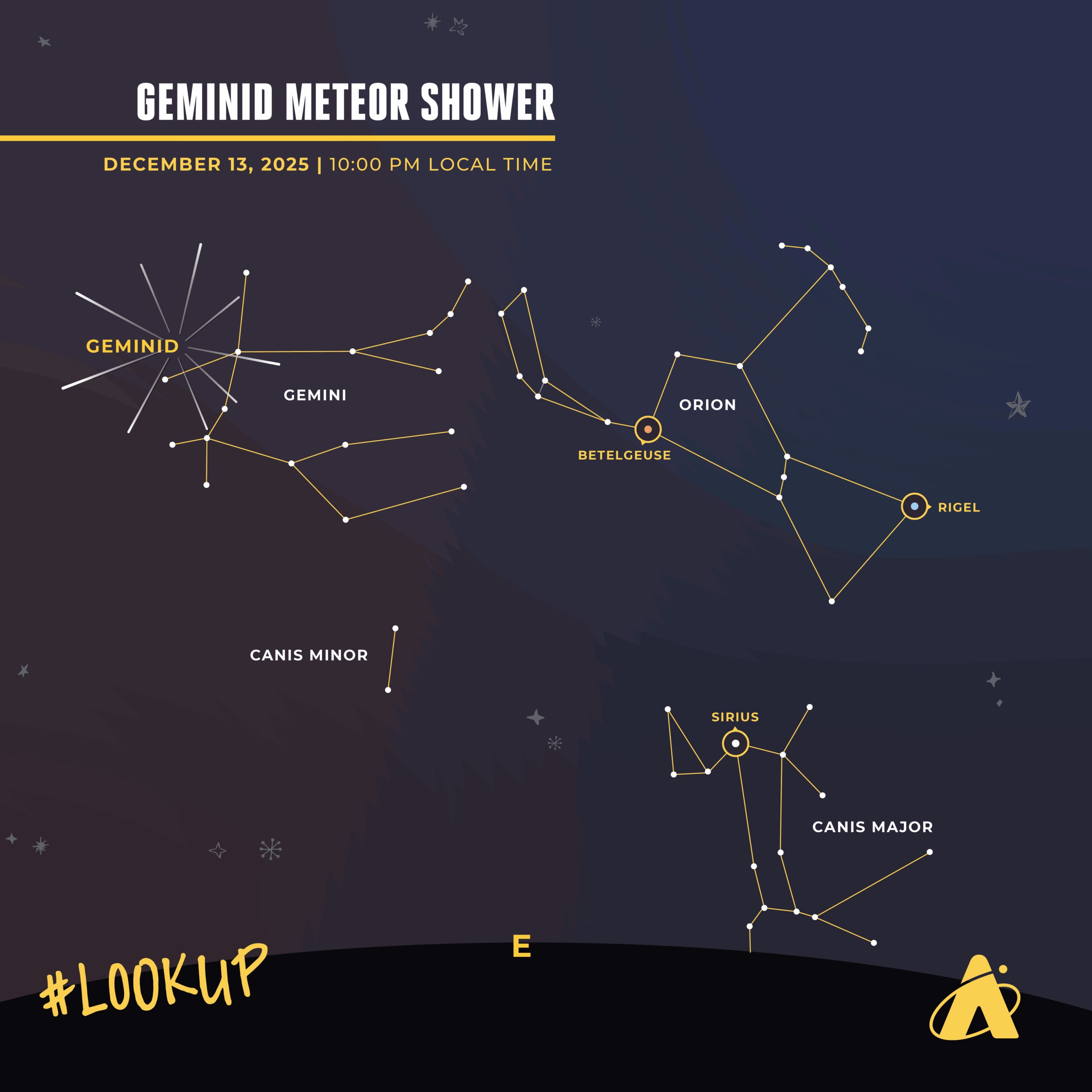
The annual Geminid meteor shower is considered one of the strongest meteor showers of the year. In 2025, it’s forecasted to peak on the night of December 13 and into the morning darkness of December 14. The waning crescent Moon shouldn’t cause too much viewing interference since it doesn’t rise until after 2:00 am CT on December 14, and it will be on the opposite side of the sky from the meteors’ radiant point in the constellation Gemini.
At its peak, nearly 100 meteors per hour may be visible under perfect viewing conditions. It must be very dark, with no extraneous light; and skies must be very clear. Under light-polluted skies, expect to see maybe a quarter to a third of that amount, at best. Be sure to bundle up—looking for meteors takes time and patience, especially in the middle of a cold night.
The Ursids Meteor Shower
The Ursids meteor shower is forecasted to peak the night of December 21 through morning of December 22. While it doesn’t boast as many meteors as the Geminid shower, this year the Ursids occur near the time of the new Moon, giving you a better chance to see meteors under the dark, Moonless sky.
Five to ten Ursids per hour are expected under dark skies at the shower’s peak, though occasional outbursts during this shower have resulted in counts of around 25 meteors per hour. Again, only about a quarter can be expected in light-polluted areas.
The Winter Solstice
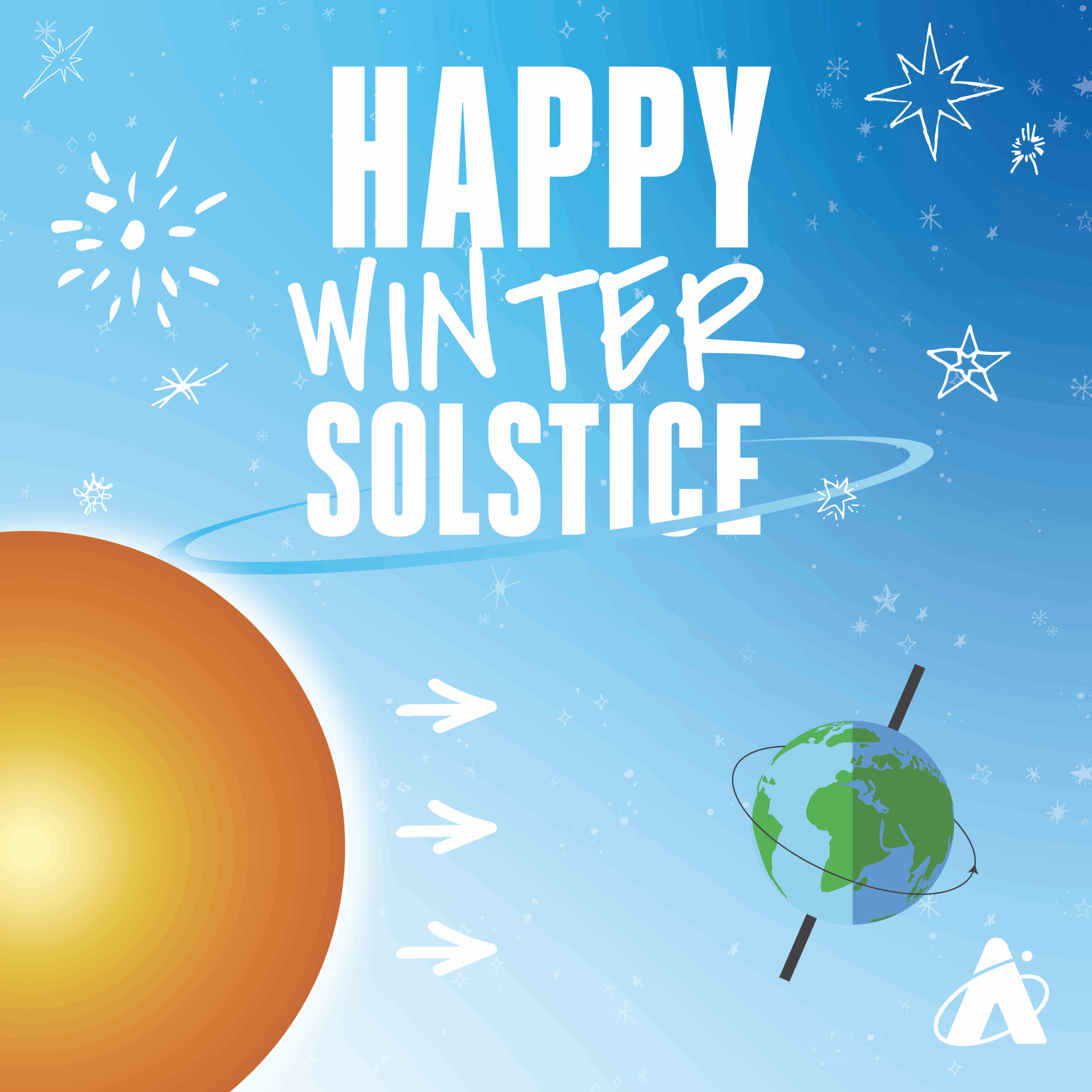
The winter solstice for 2025 occurs on December 21 at 9:03 am, marking the start of the winter season. On this day, the Earth’s North Pole is pointed furthest away from the Sun. In the Northern Hemisphere, this day experiences the least amount of daylight and longest period of darkness for the year. Since the South Pole is pointed closest toward the Sun at this time, the summer season begins in the Southern Hemisphere.
What Planets Are Visible This Month?
How To See Saturn
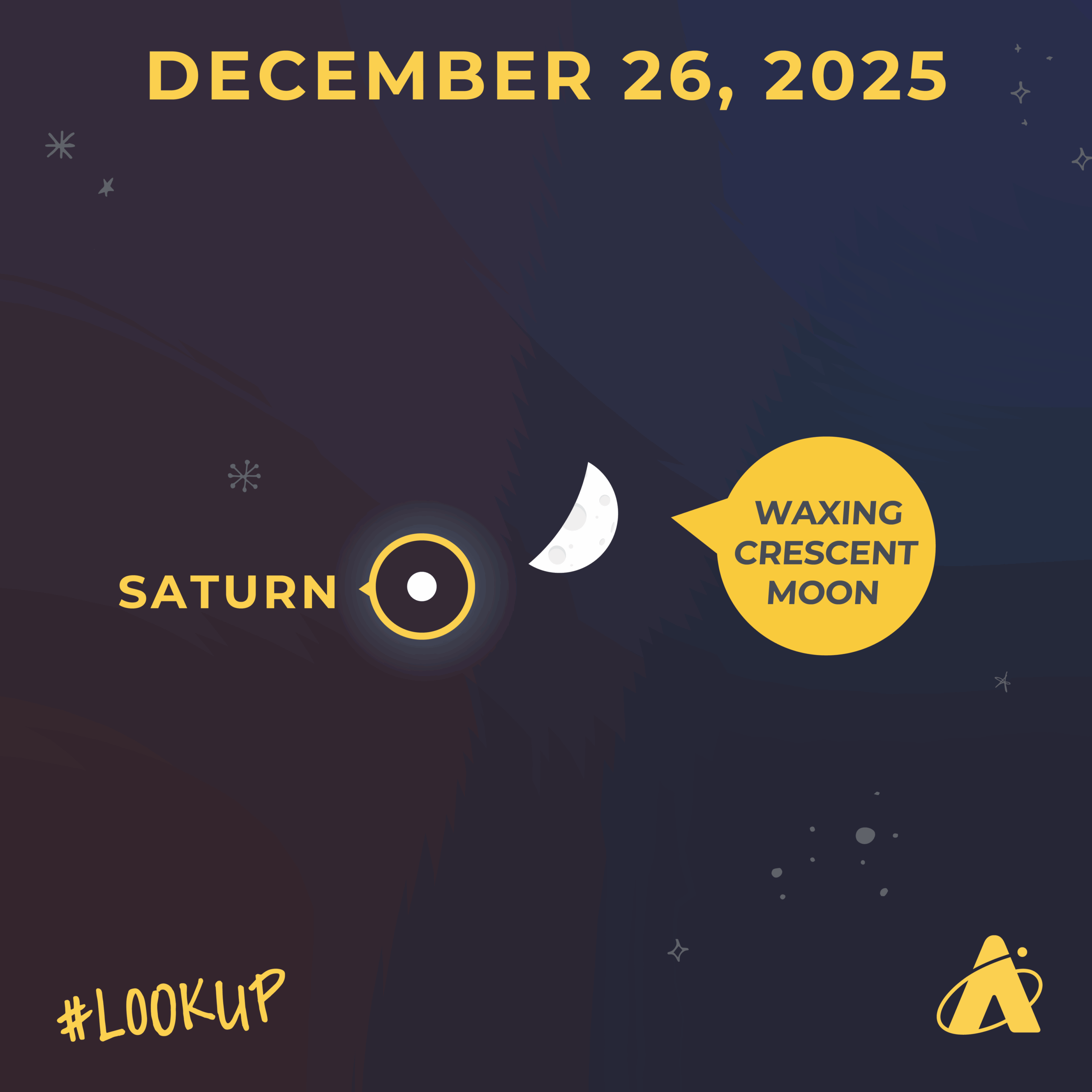
Around the end of evening twilight this month, look about halfway between the southern horizon and the zenith—or the point in the sky directly above you—to spot the planet Saturn. It’s slightly dimmer than first-magnitude in December. The night of December 26, Saturn appears near the lower “horn” of a waxing crescent Moon. Saturn sets in the west around 1:00 am at the start of the month and around 11:00 pm by the end of the month.
How To See Jupiter
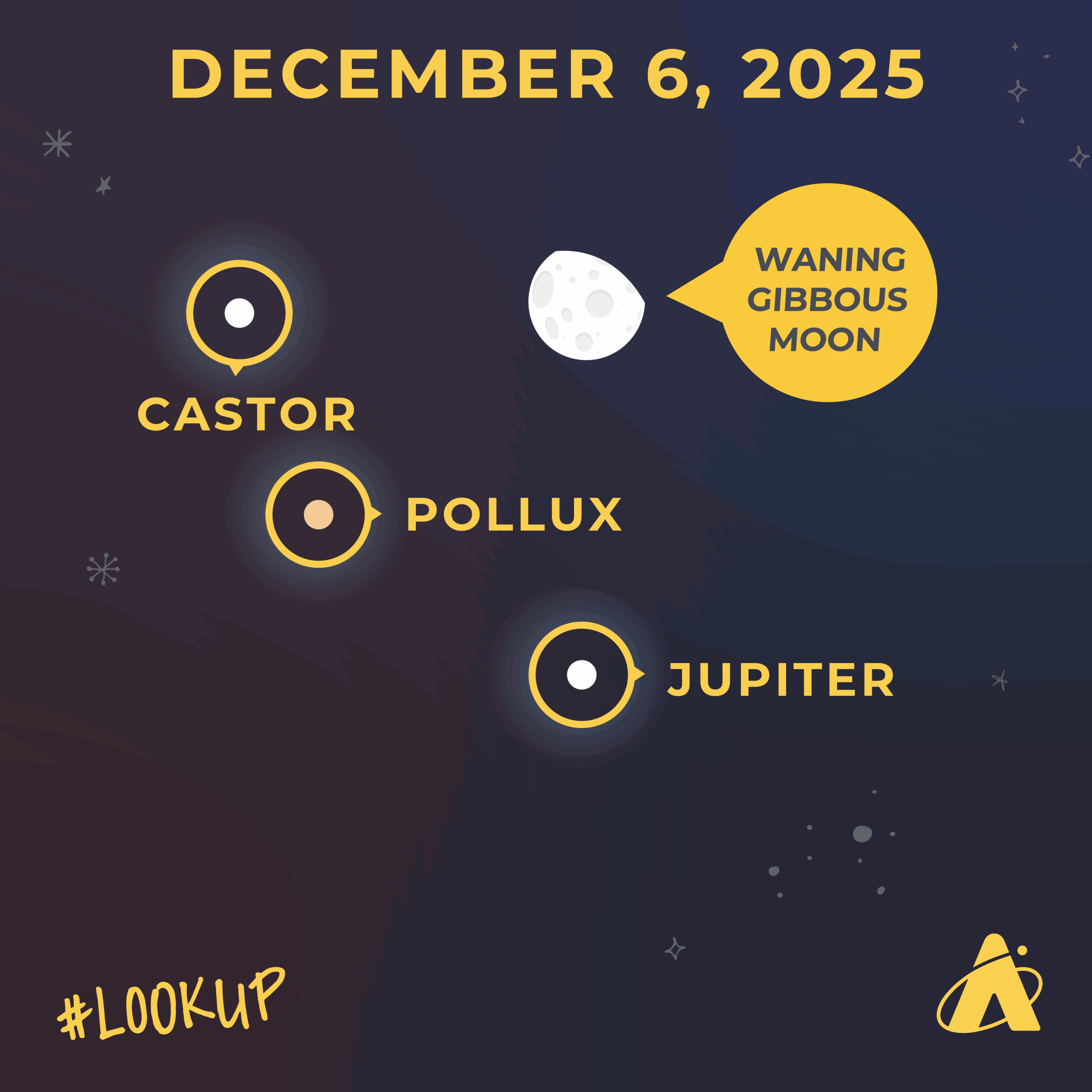
The bright planet Jupiter rises in the east-northeast around 7:30 pm on December 1, and shortly after 5:00 pm on December 31. It shines brighter than -2.5 magnitude this month. Like last month, it gets a little brighter each night. Also like last month, it appears near the “twin stars” of the constellation Gemini, Pollux and Castor. The night of December 6 through morning darkness of December 7, a waning gibbous Moon appears near Pollux, Castor, and Jupiter.
Jupiter reaches its highest point in the sky—about 70 degrees above the horizon—around 3:00 am at the beginning of the month, around 2:00 am in the middle of the month, and around 1:00 am by month’s end. At the beginning of December, it starts to fade into dawn’s light when it’s around halfway up from the western horizon. But later in the month, dawn arrives later, so it will get very close to the west-northwest horizon before the rising Sun blots it out.
How To See Mercury, Venus, And Mars
In the first half of December, about 45 minutes before sunrise, the planet Mercury may be visible rising in the east-southeast. Look about ten degrees above the horizon for the planet. However, you won’t get much time to look before the sky becomes too light. By December 16 or 17, Mercury will be too close to the Sun to be safely viewed.
Additionally, Venus and Mars appear too close to the Sun and will not be visible in December.
Moon Phases
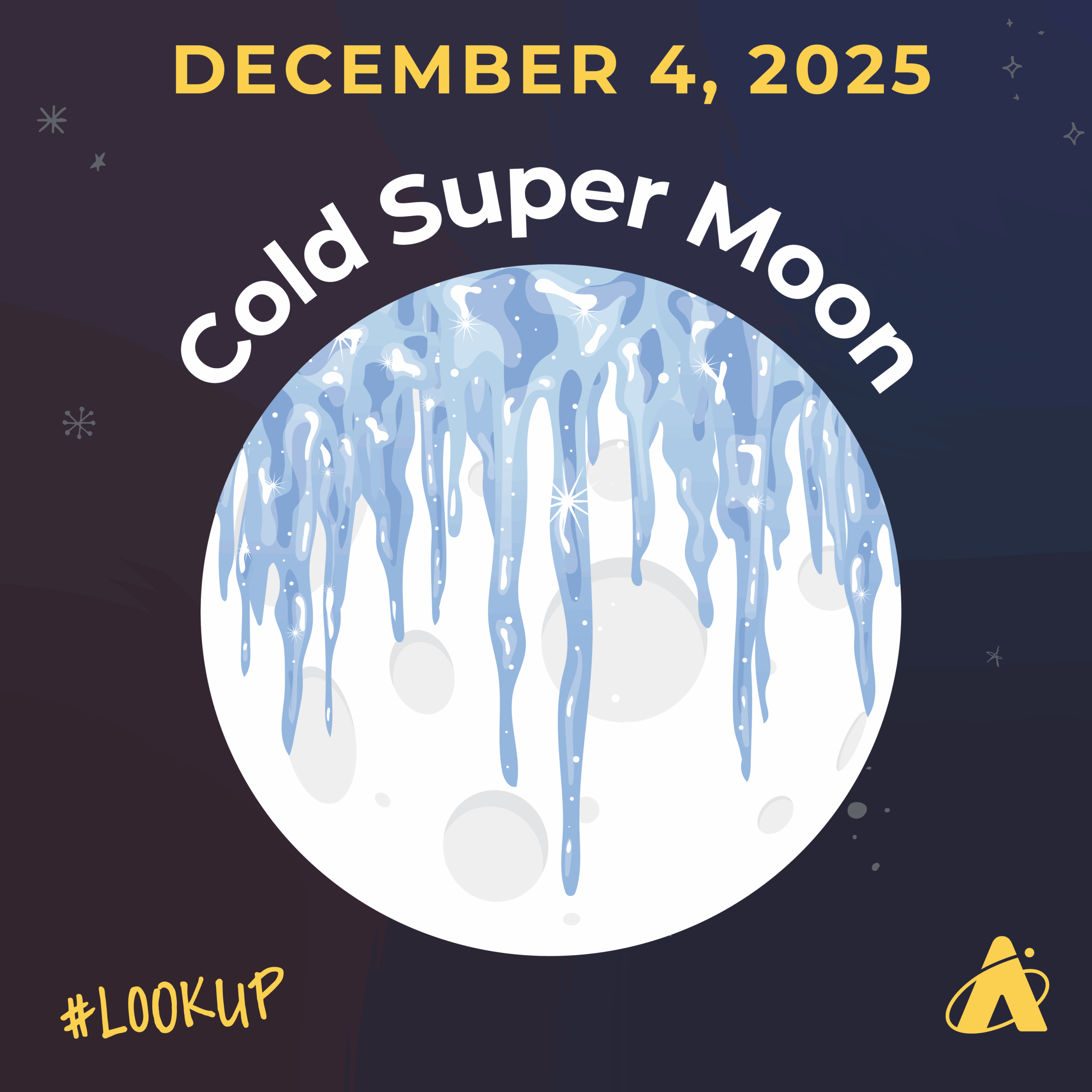
Full Moon: December 4
Last Quarter Moon: December 11
New Moon: December 19
First Quarter Moon: December 27
Please note: these descriptions are for the Chicago area, using Central time.
Subscribe To Skywatch Wednesday This December
Tour the sky with the Adler Planetarium’s Theaters Manager, Nick, in Skywatch Wednesday. Nick uses cutting-edge visualizations, NASA images, and astrophotography to show you what you can see in the night sky throughout the year.
Check out Nick’s latest episode to guide you through the autumn night sky. Learn how to see famous fall constellations like Pegasus, Cassiopeia, Cepheus, Andromeda, and Perseus. Nick also explains how to see the Pleiades star cluster, zodiac constellations Sagittarius and Taurus, Saturn with and without its rings, and Moon conjunctions!
Learn From Our Astronomy Educators
Watch recaps of Sky Observers Hangout livestreams this December! Learn how to observe upcoming cosmic happenings, enhance your astrophotography skills, and see celestial objects through a telescope virtually with our astronomy educators.
In their latest episode, Michelle and Hunter guide you through a tour of the zodiac constellations. Explore the historical connections between astronomy and astrology, learn what signs of the zodiac you can see in the sky this winter, and observe some of the wonders found hiding within these famous constellations.
Our Skies Are Full Of Holiday Lights: Winter Activities At The Adler
Image Caption: ‘Tis the season to visit the Adler Planetarium.
Longer nights lead to more stargazing and a season full of special holiday cheer throughout the Adler Planetarium.
Starting Friday, November 28, through Sunday, January 4, the Adler will offer a variety of holiday offerings, including sky shows, hands-on in-museum activities, and holiday-themed, self-guided experiences perfect for everyone in the family to enjoy! Let’s dig into what you can expect this holiday season.
New Immersive Dome Theater Shows
New to public audiences this season, and popular with school groups, is our newest sky show offering Big Astronomy. This immersive dome theater show shares the story of the people and places who make big astronomy and big science happen. Visit the extreme sites where astronomy happens in the most extreme environments and with some of the most interesting people.
The best way to kick off the new year? Pink Floyd’s The Dark Side of the Moon will be available at the Adler starting on Thursday, January 1, 2026. “The Dark Side Of The Moon” takes guests on a visual journey through space against the backdrop of one of the best-selling albums of all time, in partnership with the International Planetarium Society (IPS). Show times are coming soon!
Filling The Adler With Starlight

Our fan favorite, Skywatch Live, will have a holiday spin. Think of it as our version of a light festival as we turn down the city lights and turn up the sparkling stars and constellations that make up the magnificent winter night sky above the city of Chicago.
Learn all about stars, constellations, and even the Moon, along with the chance to create your very own constellations after the show! Check out available showtimes.
Guided Tours Of Our Newest Exhibit: Stars Aligned
Discover the intertwined history of astronomy and astrology in our newest exhibition, Stars Aligned: Tracing the Story of Astronomy & Astrology.

On this 20-minute live tour, Adler educators highlight the tools, texts, and traditions that reveal how people once used the night sky to better understand time, health, and daily life in the early modern period. Join us for guided tours Tuesday–Sunday starting November 28, 2025, and Wednesday nights beginning December 3, 2025.
Holiday Crafts You Can Take Home
Stop by our Star Studio this holiday season to create your own constellation card! Learn more about winter star formations, trace your favorites using stencils, and add a touch of sparkle. Take it home to use as a festive gift tag or holiday greeting card!
Activities will run Tuesday–Sunday from 10:00 am–2:00 pm and Wednesdays from 4:00 pm–8:00 pm starting November 28, 2025.
Touch History: Interactive Collection Objects
Transport yourself back in time in the Stargazers Hub. Learn about the methods and tools used to look to the skies for centuries, including special hands-on experiences that relate to our newest exhibition: Stars Aligned: Tracing the Story of Astrology and Astronomy.
Guests will learn more about our Giant Armillary Sphere and discover star-studded teaching collection objects from our Cabinet of Curiosity. Activities will run Tuesdays–Sundays from 10:00 am–2:00 pm and Wednesdays from 4:00 pm–8:00 pm in Stargazers Hub starting November 28, 2025.
Join Us This Holiday Season—Get Tickets
Winter is a special time at the Adler Planetarium. Every holiday season, we expand our public museum days and hours, giving you and your family more time to explore what’s new at the Adler.
Learn more about our expanded holiday hours, explore all of our immersive dome theater shows, and get a list of all of our limited-time holiday offerings.
Tickets for your next space adventure are on sale now!
10 Things At The Adler Planetarium You Don’t Want To Miss
Header Image: A snowy day at the Adler Planetarium.
Editor’s Note: Updated to reflect more current and updated exhibit information.
May your holidays shine bright, along with your favorite winter constellations. As the first planetarium in the Western Hemisphere (and one of the historic Chicago attractions located on the city’s Museum Campus), we’ve got some pretty stellar exhibits you don’t want to miss during your visit!
For a list of fun things to do in Chicago this winter, read on to check these experiences off your Chicago bucket list. You’ll even learn some behind-the-scenes tidbits along the way.
#1: Our Dome Theater Sky Shows
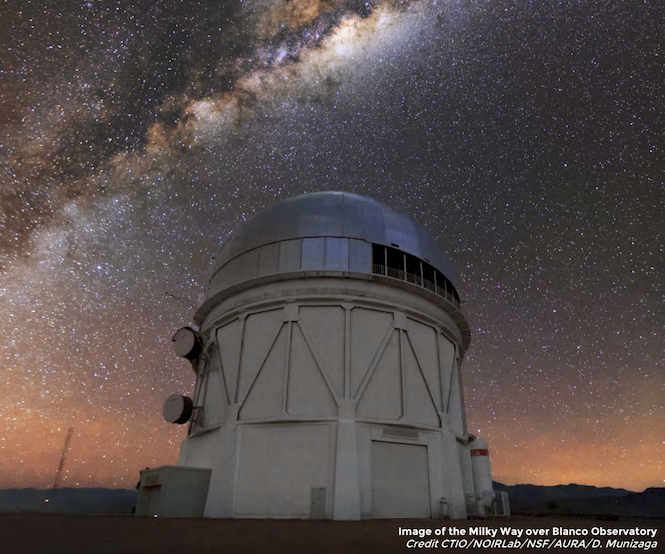
One of the coolest things about the Adler Planetarium is that we have not one, but two dome theaters!
Fun fact: We were also the first planetarium in Chicago to open a dome theater back in the day.
When you step inside a planetarium dome theater and take a seat, you become immersed in spectacular space visualizations that transport you across time and space.
What’s Currently Playing at the Adler:
- Big Astronomy: Discover Chile’s grand observatories and meet the people who push the limits of technology and what we know about the universe using world-class telescopes.
- Niyah And The Multiverse: Join young Niyah, her grown-up self, and her friends on an Afrofuturist journey through multiverse theory! Learn about shadow matter, bubble universes, many worlds, and the connections between science and culture.
- Cosmic Rhythms: Featuring Adler astronomer’s expertise, breathtaking imagery, and bold choreography by Joffrey Ballet dancer Xavier Nuñez, Cosmic Rhythms takes audiences on a mesmerizing journey through the cosmos.
- Destination Solar System: It’s 2096, and you’ve just signed up for a trip around the solar system with Space Express Tours! Get ready to tour the hottest hot spots, and most spectacular sights in deep space—fun for space explorers of all ages.
- Imagine The Moon: Explore how the Moon—our partner in space and companion in our sky—has inspired human creativity, learning, and exploration ever since looking up.
- Skywatch Live: See Chicago’s magnificent night sky simulated without light pollution. Our live presenters will show you constellations, stars, the Moon, and more as seen above the city on the day of your visit—perfect for stargazing enthusiasts!
- One World, One Sky: Blast off in an imaginary rocket with Big Bird and Elmo on an unforgettable journey to the Sun, Moon, and the Big Dipper!
Buy Tickets For Your Next Space Adventure
#2: Our Newest Exhibit, Stars Aligned

Here in the 21st century, the words astrologer and astronomer mean very different things. But in the early modern period (1500–1800), you could get accurate information about the next lunar eclipse from an astrologer or have your horoscope cast by Galileo himself.
What do astrology and astronomy have in common? What did the world look like when observing the sky and interpreting its meaning were one and the same? Step back in time in our newest exhibition, Stars Aligned: Tracing the Story of Astronomy and Astrology, to discover how these two practices were once intertwined.
#3: Say Cheese and Take A Selfie

There are eight different Selfie Spots around the museum—can you find them all?
Throughout the museum you can find stickers labeled “Selfie Spots.” Take a selfie with our inflatable Moon near the Cosmic Cafe, on a light pollution map of Chicago in Chicago’s Night Sky or with the JWST mirrors in Stargazers Hub. When exploring Other Worlds, there are a couple of awesome selfie spots where you can take pictures with large models of Saturn, Jupiter, Neptune, or Uranus hanging from the ceiling, a climbable gas giant ringed exoplanet, and a real meteorite from the Arizona desert.
#4 Astronomical Objects Everywhere

The Adler has the best and most comprehensive sundial collection in all of North America, but we also have a ton of other collections objects too! You can learn about different cultures through these objects like astrolabes and celestial globes on display.
For a limited time, experience Stargazers Hub unlocked, from November 28—December 31 from Tuesday—Sunday between 10:00 am–2:00 pm and 4:00 pm–8:00 pm on Wednesday night. Take a step into the gallery to see the tools used to look at the skies for centuries for special hands-on experiences that relate to our newest exhibition: Stars Aligned: Tracing the Story of Astrology and Astronomy.
This hands-on experience gives you a close look our seven-foot armillary sphere and the tools people have used to map the stars throughout history in our Cabinet of Curiosity.
#5: The Doane Observatory

Did you know the Doane Observatory is home to the largest publicly accessible telescope in Chicago? Since opening in 1977, the observatory in Chicago has had several telescopes within its walls, and these telescopes have given Chicagoans the opportunity to look up at the Sun, the Moon, stars, nebulae and planets despite light pollution’s interference in the city.
The Doane is open (weather permitting) on Wednesdays during Adler at Nights throughout the year. To know when the Doane will be open, join our Facebook Group or check our Doane Observatory page the week of your visit. You can also check in at the box office on the evening of your visit to inquire about the availability of the Observatory.
#6: The Telescope Terrace

When skies are clear and the weather is nice, our public observing educators and telescope volunteers will be out on the terrace with small ‘scopes for daytime observing fun.
The telescope terrace is located to the right of the Accessible Entrance of the Adler Planetarium!
#7: An Out-Of-This-World Stomp Rocket

Located in our Mission Moon exhibit, there is an interactive stomp rocket where you can build your own foam rocket and try to send it up as high as you possibly can through the atmosphere (aka a very large tube)!
Learn how you can make your own stomp rocket at home.
#8: Architectural Secrets

In 1930—the year the Adler Planetarium opened—Italian-American sculptor Alfonso Iannelli built and installed a dedication plaque in what is known as our Rainbow Lobby. To get into the museum, you walk up the front steps and pass through this lobby! Why is it called the Rainbow Lobby you ask? Around sunset every single day, the Sun’s rays pass through our glass angled prism-like front doors causing the light to bend and the colors in the Sun’s light to spread out, creating lots of tiny rainbows!
Fun fact: The Rainbow Lobby’s dedication plaque is not the only sculpture around the building created by Alfonso Iannelli. Outside and inside the Planetarium are 12 zodiac constellation plaques that match the Rainbow Lobby’s plaques that depict the planets.
#9: Spaces For Collaboration, Curiosity, and Holiday Crafts

Around the planetarium are several Community Design Labs that are flexible spaces for guests to learn through play, test ideas, create art, and reflect.
- Located in the Telescopes: Through The Looking Glass exhibit, the brand new Community Stargazers Hub offers a multiversity journey through time with a focus on historic objects and is great for all ages.
- The Community PlayLab is located in the Planet Explorers exhibit and is great for children six and under and their families.
- The Community Star Studio is located in the Chicago’s Night Sky exhibit and is great for all ages!
Stop by our community art studio this holiday season to create your own constellation card! Learn more about winter star formations, trace your favorites using stencils, and add a touch of sparkle. Take it home to use as a festive gift tag or holiday greeting card!
We’ve expanded our in-museum activity hours from November 28—December 31. Join us Tuesday–Sunday from 10:00 am–2:00 pm and 4:00 pm–8:00 pm on Wednesday nights.
#10: Winter City Views

There’s lots to look at on the inside at the Adler, but what about the outside? We’ve been located on Chicago’s lakeshore for almost 93 years, and the views of the city are unbelievable!
Fun fact: There is a huge sundial out in front of the Adler. Have you seen it before?
Join Us This Holiday Season—Get Tickets
Tickets for your next space adventure are on sale now!
Adler Skywatch: November 2025
Header Image: Dark sky image of the Milky Way taken in Middle Fork River Forest Preserve. Image credit: Vinnie Lotesto
If you’ve been bothered by the late sunrises during the latter half of October, you’ll get a brief reprieve in November 2025.
Daylight Saving Time Ends
In the Chicago area, the Sun has been rising after 7:00 am since October 13. On November 1, it rises at 7:23 am. But on the very next day, November 2, the Sun rises at 6:25 am. That’s because Daylight Saving Time (DST) ends for 2025 on November 2, at 2:00 am local time. On this date, those areas that follow DST get to turn their clocks back one hour, and get an extra hour of sleep! Throughout November, the Sun will rise before 7:00 am until early December.
The return to Standard Time means our sunrises are about an hour earlier, but it also means our sunsets are earlier too. Sunrises move from after 7:00 am to after 6:00 am, and sunsets move from around 5:45 pm to just after 4:45 pm.
November’s Supermoon
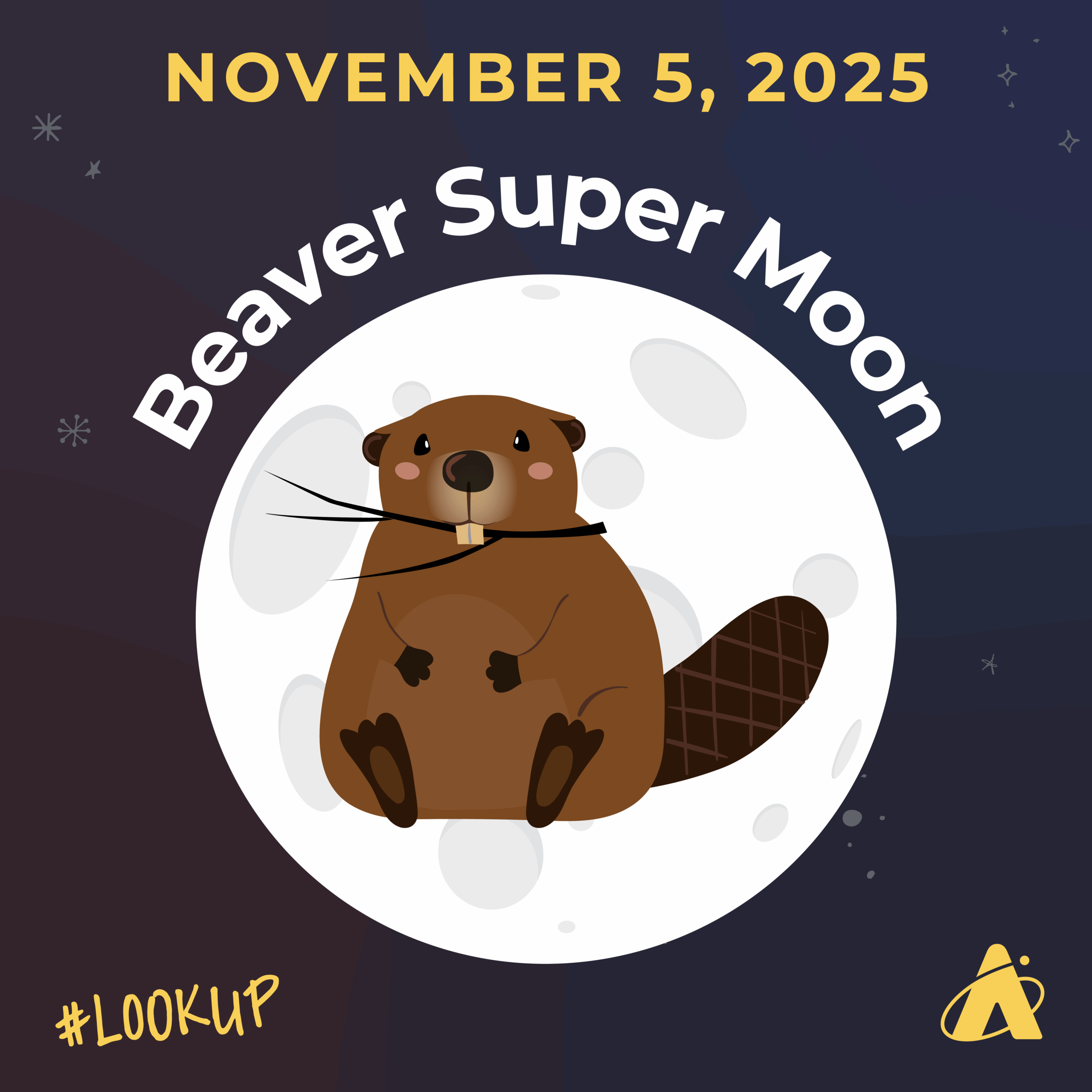
Like last month’s full Moon, November’s full Moon—which rises on November 5—can be considered a supermoon. A supermoon occurs when a full Moon (or new Moon) is close to its perigee, or closest point to Earth. As a result, a supermoon may look slightly bigger and brighter than a typical full Moon. November’s is the closest supermoon of the year, being fewer than 222,000 miles from Earth.
This month’s full Moon earns the nickname the “beaver supermoon,” as this is the time of year when the large American rodents are busy finishing up their winter homes.
Planet Spotting This November
Spotting Saturn
In planetary action this month, Saturn rises in the east-southeast before sunset each day around first-magnitude in brightness. Early in the month, start looking for it low in the east-southeast during early dusk. Later in the month, try looking around the same time, but a little higher in the southeast sky.
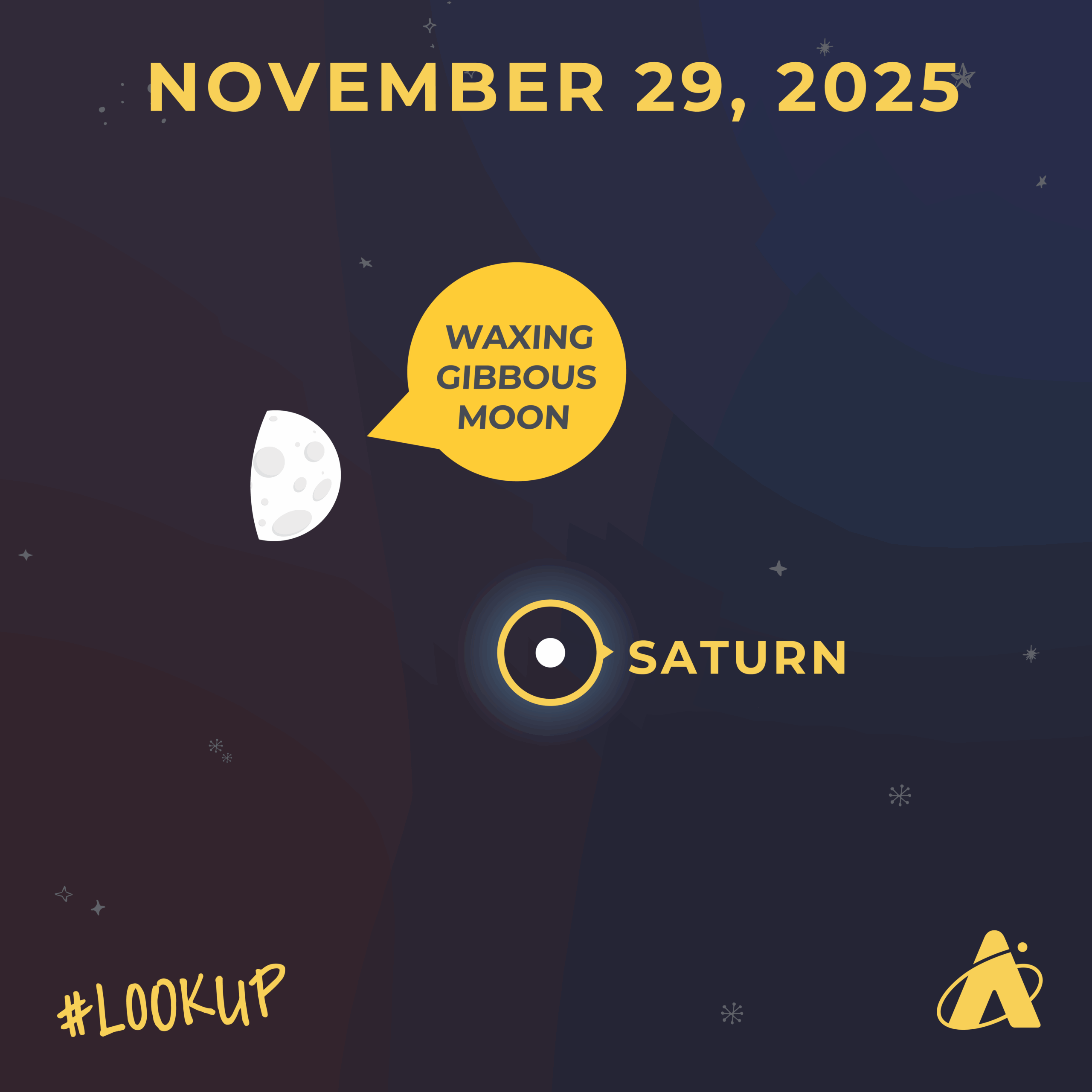
Around mid-evening, Saturn gets about 45 degrees high in the southern skies. The evening of November 29, it’s less than five degrees away from the bright side of a waxing gibbous Moon. Saturn sets in the west-southwest around 2:30 am Central time early in the month and by about 12:30 am by month’s end.
How To See Jupiter
The planet Jupiter shines brighter than -2.3 magnitude this month, and it gets a little brighter each night. It rises in the east-northeast around 9:30 pm early in the month, and around 7:30 pm by month’s end.
Like the past few months, Jupiter appears near the “twin stars” Pollux and Castor, in the constellation Gemini. The night of November 9 through the early morning darkness of November 10, a waning gibbous Moon appears between Jupiter and Pollux, making it easier to spot Jupiter.
Jupiter gets about 70 degrees high in the southern skies around 3:00 am–4:00 am. Jupiter is around 45 to 50 degrees high in the west-southwest skies when it starts to fade in the light of dawn.
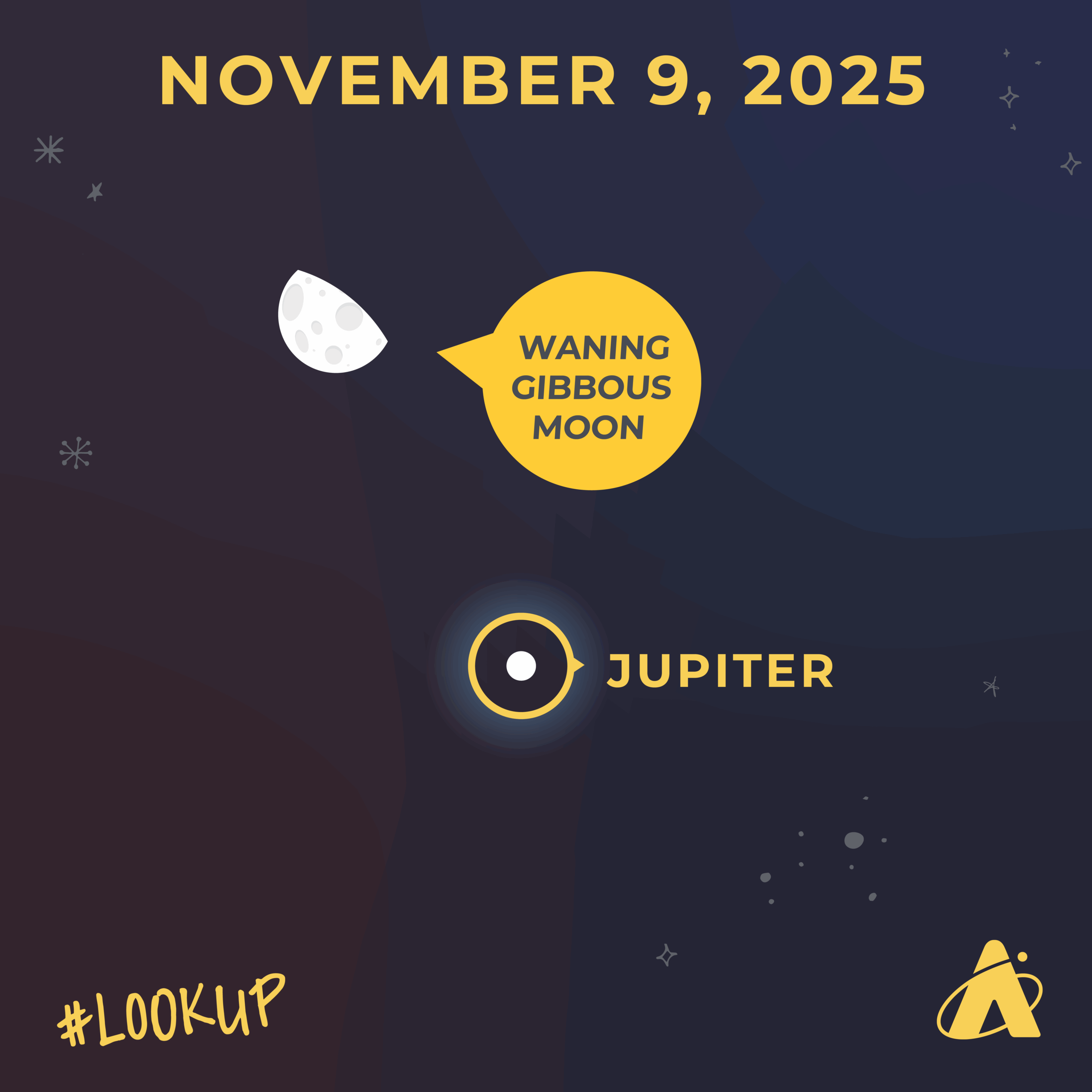
Venus In The Early Morning Sky
The brightest planet, Venus, rises in the east-southeast about one hour before the Sun throughout early November. However, the planet appears to move closer to the rising Sun each day this month. By November 13, Venus appears very low in dawn’s glare, making it difficult to spot. Due to its proximity to the Sun, viewers looking for Venus at this time run the risk of permanent eye damage.
Mercury And Mars
On the last day or two of the month, the planet Mercury rises in the east-southeast, about 90 minutes before the Sun. It’s brighter than first-magnitude and will get even brighter the first couple days of December! It’s a good time to try spotting this elusive planet.
The planet Mars appears very close to the setting Sun this month, making it difficult—if not impossible—to see.
The Leonid Meteor Shower
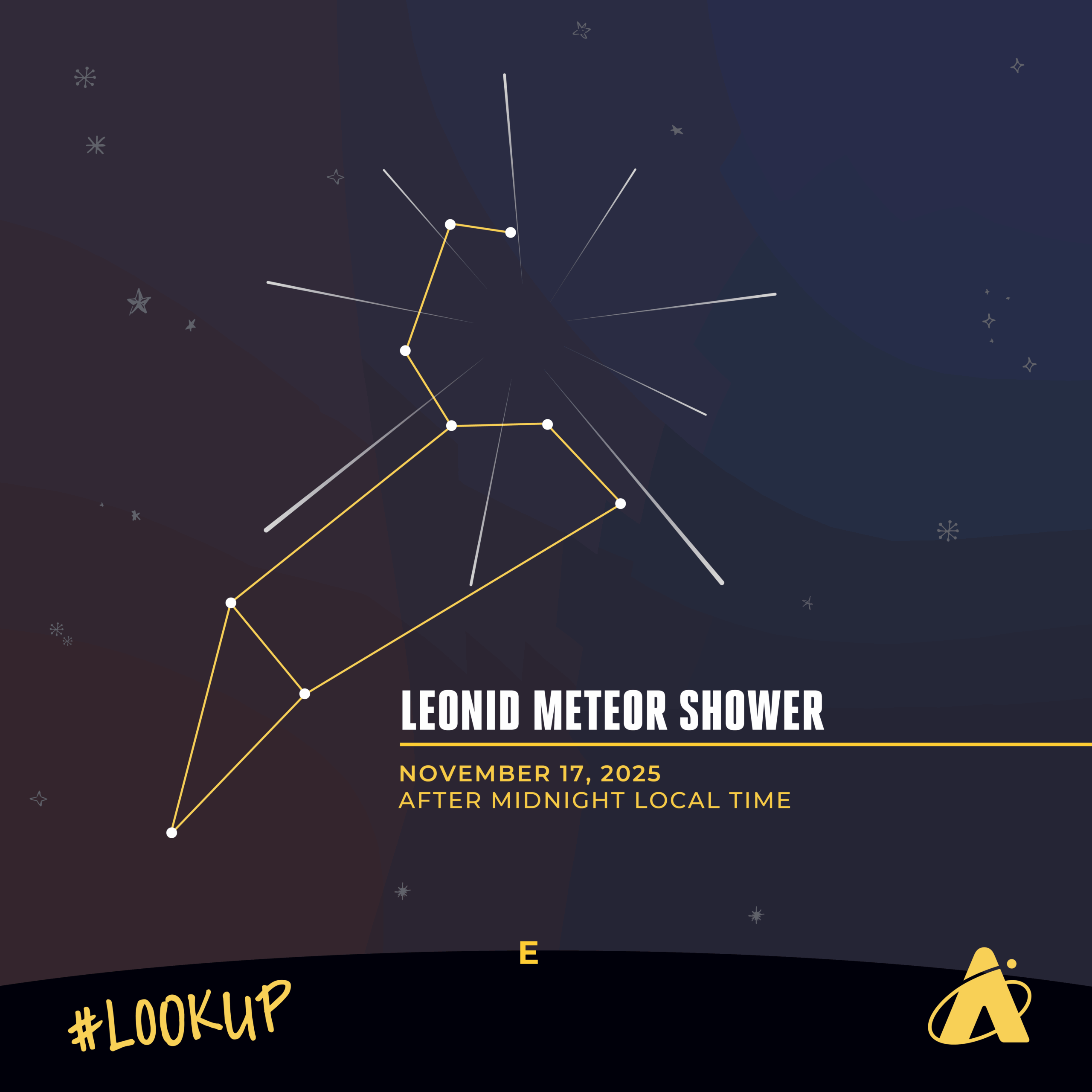
The Leonid meteor shower peaks the night of November 17 through the early morning darkness of November 18. Only around ten Leonid meteors per hour are expected in a typical year under dark skies—with even fewer seen in light-polluted areas.
However, the Leonids are historically known to have sporadic outbursts of many meteors. In rare cases in recorded history, the Leonids have turned into meteor storms, with many meteors per minute. While we don’t expect a meteor storm until around 2099, you may still want to check out this lovely medium-strength meteor shower for yourself. This year, the waning crescent Moon on November 17–18 doesn’t rise until nearly dawn, allowing a better opportunity for darker skies. The darker the sky, the better the viewing!
November 2025 Moon Phases
Full Moon: November 5
Last Quarter Moon: November 11
New Moon: November 20
First Quarter Moon: November 28
Please note: these descriptions are for the Chicago area, using Central time.
Subscribe To Skywatch Wednesday This November
Tour the sky with the Adler Planetarium’s Theaters Manager, Nick, in Skywatch Wednesday. Nick uses cutting-edge visualizations, NASA images, and astrophotography to show you what you can see in the night sky throughout the year.
Check out Nick’s latest episode to guide you through the autumn night sky. Learn how to see famous fall constellations like Pegasus, Cassiopeia, Cepheus, Andromeda, and Perseus. Nick also explains how to see the Pleiades star cluster, zodiac constellations Sagittarius and Taurus, Saturn with and without its rings, and Moon conjunctions!
Learn From Our Astronomy Educators
Watch recaps of Sky Observers Hangout livestreams this November! Learn how to observe upcoming cosmic happenings, enhance your astrophotography skills, and see celestial objects through a telescope virtually with our astronomy educators.
In the latest episode, Michelle and Hunter tell you everything you need to know about solar maximum—a period of heightened solar activity that we are currently in! Get a live view of the Sun through our telescopes and learn all about how the Sun’s activity and dynamic weather affect us here on Earth.
Adler Planetarium Announces Opening of Stars Aligned
Header Image: Astrolabium Planum, a book from 1494, features a collection of illustrations corresponding to each degree of the zodiac. Image Credit: Josh Castleberry
On Friday, October 31, the Adler Planetarium’s newest temporary exhibition called Stars Aligned: Tracing the History of Astronomy and Astrology will open to the public. Exploring the connected histories of astronomy and astrology in the early modern period (c.1500-1800), this exhibit will help you understand how people of the past made sense of the world around them.
These two disciplines were once the same practice, but over time, astronomy and astrology took different paths, though tied to a similar purpose, a longing to understand our place in the universe.
Stars Aligned: Tracing The History Of Astronomy And Astrology
Draw back the curtains and get a glimpse into the popularity and practice of astrology in the early modern period through historic instruments and books, helping you piece together how these two disciplines, once intertwined, began to shift. Astronomy, as the mathematical study and charting of celestial bodies, laid the groundwork for scientific discovery. Astrology interpreted those same movements as signs, shaping how people thought about time and fate, and how they used the stars to navigate daily life.
“One of the core missions of the Adler has always been to tell the history of astronomy, to help us understand how where we came from impacts how we study the stars today. Astrology is a crucial part of that history, and it’s so exciting to be able to unpack that story with some of our most unusual and special artifacts,” says Dr. Katie Boyce-Jacino, curator and director of collections at the Adler.
“Approaching the history of astronomy from this angle gives us access to stories and lived experiences that we might not otherwise see. It’s a very human story, of people trying to make sense of the world around them, just like we do today!”

Image Caption: This object is a Northern Indian scroll from 1769 is an astrological calendar for the year, also known as a Hindu Almanac, or Panchānga. Image Credit: Josh Castleberry
Entering the exhibit will feel like entering an astrologer’s home or place of practice from the period, featuring both rarely seen collection pieces and new acquisitions that help tell the history of astrology.
Some featured items include a medical astrology book from the 1600s, a northern Indian scroll and astrological calendar from 1769, a book of zodiac illustrations that dates back to 1494, and the Banneker Almanac from African-American naturalist Benjamin Banneker that offers guidance on topics like planting, astrology, and civic engagement from the year 1795.
A Peek Into The New Exhibit
Before astrology apps, people used panchāngas to plan their lives. Dr. Katie Boyce-Jacino, curator and director of collections, explains how early-modern astrologers used panchāngas, or almanacs, to help people find the perfect day for an event in 18th-century Rajasthan, India.
This beautiful and well-preserved example of a 1769 panchānga is on display in our new exhibit, Stars Aligned.
Learn more about the new exhibit or buy tickets to be among the first to see this temporary exhibition, included with all ticket packages.




